Back to recent reviews
2012 archives:
Gregg Arthur - Unforgettable ? A Portrait of Nat ?King? Cole
Conly, Harding, Jones, Taylor - Grass Roots
Mace Francis New York Nonet - Land Speed Record
Magnet - Magnet
Willow Neilson - Lightbulb Life
Wangaratta Jazz & Blues Festival
Moskus - Salmesykkel
Marc Johnson and Eliane Elias - Swept Away
The Andy Sugg Group - The Berlin Session
Abel Cross Quintet - Neo Bop
Diana Krall - Glad Rag Doll
Divergence Jazz Orchestra- Live at the Bald Faced Stag 29/7/12
Seaman Dan - Sunnyside
Sean Wayland - Slave to the Machine (Volumes 1 & 2)
Logic Live (Double DVD/CD)
Mike Nock and Laurenz Pike - Kindred
James Carter - After All
Tony Gould and Peter Petrucci - The Journey Home
Matthias Schriefl - Six, Alps & Jazz
Simcock, Garland, Sirkis - Lighthouse
Jacam Manricks - Cloud Nine
Sarah McKenzie - Close Your Eyes
Bernie McGann - Wending
Craig Scott Quintet - Timeline
Marialy Pacheco 11th August 2012 ? Coffs Harbour
Phil Treloar - Of Other Narratives - tracings in the ground of. Collective Autonomy / Volume 3 - Primal Communication
Mike Stern - All Over the Place
Neneh Cherry and The Thing - The Cherry Thing
John Abercrombie Quartet - Within a Song
Josh Kyle - Possibilities
John McAlls Black Money - Alter Ego
Peter J Martin - Waltz for the Wicked
Lily Dior - Let's Talk About It
Wayne Krantz - Howie 61
Motion - The Drowned World
Renaud Garcia-Fons - Solo ? The Marcevol Concert
Tim Stevens - Life's Undertow
Guy Strazz Quartet - Eastern Blues
Melbourne International Jazz Festival 2012
Daimon Brunton Quintet - Wha Sa Live
Tim Willis and The End - Keep Your Chin Up
Tim Clarkson - Evolution of Beauty
Vijay Iyer Trio - Accelerando
Esbjorn Svensson Trio - 301
Phronesis - Walking Dark
Melody Gardot - The Absence
Tony Gorman - Tony Gorman's Monday Club
Barney McAll - Graft
Skii Harvey - Bound by History
Sandy Evans and Friends with Guru Kaaraikkudi Mani and Sruthi Laya - Cosmic Waves
Buck Clayton - The Complete Legendary Jam Sessions: Master Takes
Dick Hyman Trio - You're My Everything
Trombone Shorty - For True
Jens Thomas - Speed of Grace
Ben Hauptmann - Yum Yum Tree RecordsCC
David Murray Octets - The Complete Remastered Recordings on Black Saint
Galaxstare - A Time, Times and Half a Time
David Ades & Friends - A Glorious Uncertainty
Tal Cohen Quartet - Yellow Sticker
Alfredo Rodriguez - Sounds of Space
Alex Pertout and Nilusha Dassenaike - Moments in Time
2011 ARCHIVES:
Benjamin Sanz Quintet - Mutation Majeure
Houston Person - So Nice
Compass - Ode to an Auto Rickshaw
The Vampires - Garfish
Charmaine Jones and Mike Bevan - A Small Hotel
Slide Albatross
Marc Hannaford - Ordinary Madness (Quintet) and Sarcophile (Trio)
Dave Brubeck Quartet - Their Last Time Out
Nicki Parrott - Can't Take My Eyes Off You
Keith Jarrett - Rio
Nick Haywood Quartet - 1234
Kellylee Evans - Nina
Ella Fitzgerald - S'Wonderful: Ella in Japan
Liam Burrows With John Morrison's Swing City - All of Me
Michael Feinstein - The Good Life: The Sinatra Project, Volume Two
Gadjo Guitars - L'Amour En Douce
Bridie King - Blue Ivories
Andy Sheppard, Michel Benita and Sebastian Rochford - Trio Libero
Maggie Britton - Ditto ? Songs for Alexander
Christian McBride - Conversations with Christian
Phil Treloar - Of Other Narratives
Jeff Riley - Jazz Suite
Quentin Angus Quintet - Retrieval Structure
Robert Burke, Tony Gould, Tony Floyd and Nick Haywood - Live at Bennett's Lane
Mike Nock Trio Plus - Hear and Know
Peter Knight - Fish Boast of Fishing
Marialy Pacheco - Songs that I Love
Bucky and John Pizzarelli - Generations
Emma Grace Stephenson - Jazz Workshop AustraliaCC
Warren Vache and Bill Charlap - 2gether
Ella Fitzgerald - Live at Mister Kelly's
Cedar Walton - Voices Deep Within
Samurai Spirit - Ganbare Nippon
Warren Wolf - WW
Ella Fitzgerald - Best of the BBC Vaults
Rebecca Kilgore with Harry Allen Quartet - Live at Feinstein's: Celebrating Lady Day and Prez
Nick Hempton - The Business
James Whiting - Burbank
Keith Jarrett - Rio
Compass Quartet - Ode to an Auto Rickshaw
Darius Jones Trio - Big Gurl [Smell My Dream]
Memory of Elements - MoE
Laura Fygi - The Best is Yet to Come
"Buck" Pizzarelli and the West Texas Tumbleweeds - Back in the Saddle Again
Dave Ades & Friends @ Venue 505 (9/11/2011)
Wangaratta Festival of Jazz 2011
Sean Jones - No Need for Words
Peter Knight and Dung Nguyen - Residual
Takadimi - New Common Sense
Ingrid James & The Global Collective - Pangaea
Origami Trio - The Blues of Joy
The Andrew Dickeson Quintet - Weaver of Dreams
The Paul McNamara Trio - IndependentCC
Karrin Allyson - Round Midnight
Nicki Parrott and Ken Peplowski - Like a Lover
Rossano Sportiello Trio - Lucky to be Me
Stan Getz - The Clef and Norgran Studio Albums
Sherrie Maricle and The DIVA Jazz Orchestra - Johnny Mandel: The Man & His Music
Leonie Cohen Trio - Sideshow Pony
Cedric Hanriot - French Stories
Laura Kahle - Circular
Lee McAllistair - Spellbound
Adrian Cunningham - Walkabout
Sandy Evans Sextet - When the Sky Cries Rainbows
Mace Francis Orchestra - Chinese Whispers IV
Katie Noonan Elixir - First Seed Ripening
Matt Keegan Trio - Meets David Ades
Harold Lopez-Nussa Trio - El Pais de las Maravillas
Dan Barnett - Somewhere, Some Place, Some Time
Scott Hamilton and Rossano Sportiello - Midnight at Nola's Penthouse
Bill Charlap - I'm Old Fashioned
Duke Ellington - The Great Concerts: London & New York 1963-64
Melbourne International Jazz Festival 2011
Howard Alden - I Remember Django
Elly Hoyt - Pinnacle
Sarah McKenzie - Don't Tempt Me
Jeremy Pelt - The Talented Mr Pelt
My Goodness McGuiness - Insular Peninsula
Pascal Schumacher Quartet - Bang My Can
Browne, Hannaford, Anning - Shreveport Stomp
Cameron Earl Quartet - Run Run
Daniel Gassin Sextet - Which Way
Fran Swinn Trio - Every Dog
Joachim Kuhn, Majid Bekkas and Ramon Lopez - Chalaba
Portico Quartet - Knee-deep in the North Sea
Matt Baker - Underground
Luke Howard and Janos Bruneel - Open Road
The End - The End
Jason Moran and The Bandwagon - Ten
Briana Cowlishaw - When Fiction Comes to Life
Art Tatum - Solo Masterpieces
Allan Vache - Look To The Sky
Jacam Manricks - Trigonometry
Quinsin Nachoff - Forward Motion (FoMo)
Song Fwaa - Ligeti's Goat
Jane Monheit - Home
Bill Allred Featuring John Allred - The New York Sessions
Duke Ellington - From His Treasure Chest 1965-72
David Klein Quintet - My Marilyn
3ofMillions - Abstruction
BluesFest 2011
Amphibious - Alive & Breathing
Jane Irving - Beams
Tim Stevens Trio - Scare Quotes
James Osborne Jazz Collective - Playtime
Renaud Garcia-Fons - Mediterranees
Mark Isaacs's Resurgence Band - Aurora
Nicki Parrott - Black Coffee
"Buck" Pizzarelli and the West Texas Tumbleweeds - Diggin' Up Bones
Lew Soloff and Steve Richman - Sketches of Spain
2002-2010 ARCHIVES
|
Reviews
 
 
 -
masterpiece, -
masterpiece,
 
 -
excellent, -
excellent,
  - good
- good
 - fair, - fair, - poor - poor
To Search for reviews - Key CTRL+F and artist or album name
| 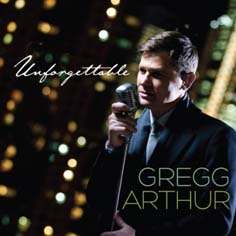 | Gregg Arthur - Unforgettable ? A Portrait of Nat ?King? Cole (ABC Music 476 5103)
|
Here is a tribute album to one of the 20th century?s greatest voices Nat ?King? Cole by Australia?s Gregg Arthur. Arthur has been based in Las Vegas for a number of years keeping the Sinatra flame burning. As you?d expect, this album includes all the headline numbers associated with Cole; Mona Lisa, the title track Unforgettable, When I Fall in Love, Sweet Lorraine, Nature Boy, indeed, fifteen tracks in total. Arthur has a deep woody resonance on the low notes along with an honest warmth in the upper register which is neither reminiscent of Cole or Sinatra but rather of Matt Monro. Classic respect has been paid by arranger and pianist Michael Hope but I was hoping for more adventurous arrangements of these familiar favourites. The inclusion of lesser known gems like For Sentimental Reasons and the sophisticated bonus track More and More add weight along with the talents of guitarist James Muller and bassist Craig Scott. The album has that sense of immediacy in its ambience which suggests the singer carried the tradition of the great crooners of the time and recorded in front of a live band and orchestra
   
|
Peter Wockner
|
| Back to Index |
|  | Conly Harding Jones Taylor - Grass Roots (AUM Fidelity/Fuse)
|
New York altoist Darius Jones?s 2009 searing debut album, Man?ish Boy with his hoarse, raw-toned sound loaded with emotional weight, introduced an exciting, uniquely inventive talent of extraordinary ability. Now, in this self-titled album he presents a new avant US group with baritone saxophonist Alex Harding, bassist Sean Conly and drummer Chad Taylor, all highly experienced players. The seven numbers, although composed by the members singly or collectively, sound very much like free jazz in a neo-impressionistic context. Opening with an orchestral fanfare and cymbal clashes, the lead track, Hottness evolves into frantic passages of stabbing notes amidst sudden tremolos against busy drums and bowed bass, only to subside into a slow-pulsing pleasantly melodic theme, suddenly erupting into controlled muscular mayhem with scorching baritone and an almost hysterical alto, before reverting to the subdued theme to end. After a series of four-piece spaced, staccato jabs, Flight AZ1734 takes off on a fast post bop theme ? albeit with faint echoes of Nat Adderley?s Work Song ? with a hectic, rasping, shrieking solo from Jones, an odd off-beat baritone solo and a very skilful, quick bass solo featuring speeding chords. A Jones composition, Lovelorn, beginning with baritone pedal notes and alto response becomes a mournful ballad, led by a pure-toned alto with highly active, distributed percussion, gradually building to a frustrated scream; another superbly executed chordal bass solo reintroduces the alto theme underpinned by a loping baritone to conclude. In an unusual collection the most unorthodox track is a tempo-lessHovering Above, where various sounds ? breathing through the horns, tapping, growling, rumbling, vocal noises, squeaks ? convey an eccentric soundscape
   
|
John McBeath
Previously published in The Australian Nov 2012 |
| Back to Index |
| 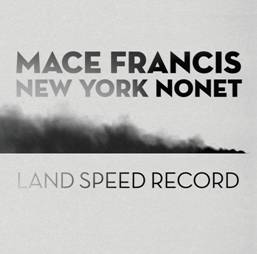 | Mace Francis New York Nonet - Land Speed Record (Listen/Hear Collective)
|
Perth-based composer/band leader Mace Francis has been writing and arranging for his large groups since 2004, and in that year won an APRA Professional Development Award; other awards followed as the Mace Francis Orchestra made five recordings and four national tours. He lectures in Jazz Composition & Arranging at the WA Academy of Performing Arts and has worked with a variety of Australian and overseas artists. This new album was recorded in New York with nine musicians, a mixture of New York-based Australian, and US players. Francis?s style is derived from trombonist Bob Brookmeyer?s, with whom he studied, and also owes something to Maria Schneider and Gil Evans. Although there are elements here of classical influences ? as in the openings to most tracks ? Francis?s themes are rhythmically strong and a jazz ethos invariably emerges. Altoist Jon Gordon notes that the composer has ?his own voice and vision ? qualities that can?t be taught.? Gordon is a sparkling soloist on Samsara, a moody piece led by Douglas Yates?s bass clarinet, breaking out with Alan Ferber?s trombone and Mark Ferber?s comprehensive drumming. Why A? features Nate Radley?s guitar moving in front of sedate horn voicings before launching into swinging solo choruses. A trumpet cadenza from Matt Jodrell begins the title track, soon expanded by a lively ensemble, quickening and building to Sean Wayland?s fast piano solo, excitingly driven by powerfully creative drumming. Mace Francis has mastered an ability to translate and expand his melodies into accessible and meaningful arrangements for large ensembles, and in this collection he has the musicians to satisfyingly interpret his ideas
   
|
John McBeath
Previously published in The Australian Nov 2012 |
| Back to Index |
| 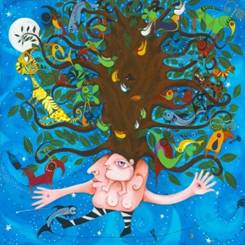 | Magnet - Magnet (Independent/mag.net.au)
|
Top-ranking Melbourne guitarist Stephen Magnusson spent several years playing and studying in Europe based in Zurich where he met his long-time collaborator, Argentinean drummer Sergio Beresovsky, who is part of this debut album featuring Magnusson?s new quartet Magnet. The first two things to be said about the collection are: it features an unusual line-up of guitar, drums, trumpet and wordless male vocals; and the music is more abstract and impressionistic than some of Magnusson?s other work. The album opens quietly with Vos, using a textural guitar wash and soft percussive effects gradually swelling then fading out. Both Eugene Ball?s trumpet and vocalist Carl Pannuzzo are introduced on track two where, after the guitar?s Spanish chords, a sweeping, heraldic trumpet begins Monte Hermoso in a Sketches of Spain style leading to a short piece of guitar Espagnol and then Pannuzzo?s soaring wordless vocals, drenched in duende. Here and throughout the collection the voice, often improvised, is used as an instrument in the ensemble, and Pannuzzo varies his delivery so that the vocals never become monotonous. Goggles,a shorter piece opens with trumpet and voice in unison on a post-bop theme and as Ball?s trumpet rockets off in a solo the voice climbs and drops as drums work busily against buzzy guitar chords. Bluesy trumpet and twangy delta guitar open Blu and Pannuzzo?s vocals hold all the raucous pain, torment and searing emotion of the original blues. From the fast-speaking trumpet ofTalk to Me to the quickening vocal wanderings and semi-classical guitar of Prickly, this is a highly inventive album of a completely original and unique style of ?new? music
    
|
John McBeath
Previously published in The Australian Nov 2012 |
| Back to Index |
|  | Willow Neilson - Lightbulb Life (Independent/www.lightbulblife.com)
|
Willow Neilson is a former Sydney based saxophonist who in the past four years has been based in Shanghai
Amongst a number of various worldly influences, there are two particularly stand out tracks on this album. Firstly ?Taxi? inspired by an automated voice message inside a Shanghai taxi along with the sounds of a credit card receipt printer. The track opens with these two sounds, the voice inspiring a harmonic saxophone that Willow calls ?Comedy Bossa? and the printer, along with combined rhythms of Alex Ritz on drums and Leonardo Susi on percussion. The sampled sounds meld into the music and highlight the theme of the album where ideas or seeds of music can come from the most unlikely of origins such as annoying hammering during renovations next door.
In some contrast to this is the final live track recorded at Yuyintang. Here you can feel the energy. Neilson employs the ?Maestro Sound System? on his saxophone often associated with Sydney saxophonist Matt Keegan. Steinar Nickelson on keyboard stirs a frenzy of a solo, igniting the crowd on what was clearly an electric performance. Two vocal tracks will add to the exoticism for western ears hearing Chinese jazz vocals but I remain unconvinced of the monosyllabic nature of the language translating to a jazz setting. Patience will be rewarded approx 70 seconds after the final track ends with an amusing conversation between man and dog.
   
|
Peter Wockner
|
Australian saxophonist Willow Neilson settled in Shanghai, China in 2007 where he?s lectured, and also studied and played with a variety of Chinese and international musicians. This album, recorded in Hong Kong draws on Chinese and many other influences in a multi-media event portraying bustling Shanghai, China?s largest city. The collection utilises some city sounds, including taxis, the subway, construction sites and street vendors. An example is Taxi featuring recorded messages and rhythmic sampled sounds from a Shanghai taxi which segue into a bossa beat from the album?s basic quartet of sax, keys, bass and drums. To properly comprehend this collection it?s essential to read Neilson?s cover notes, available on the website. The opening trackMicrocosm, proceeds in a restrained, unremarkable Rumba groove with competent solos from drummer Alex Ritz, Steinar Nickelson?s keys and the leader?s tenor; on other tracks he plays soprano, alto, and baritone saxes. A better Latin rhythm is achieved in Cuban style in Secret Society. The title song explores a folkloric rhythm from Northern Brazil and adds percussionist Leonardo Susi, as well as guesting guitar and trumpet, and although the ensemble work lacks verve, Neilson?s solo adds some needed fire. A male Chinese jazz vocalist, Coco Zhao, sings his own introspective ballad Sunday Story in Chinese, with Balinese gamelan samplings and some pleasant fills from keys and sax. Another Chinese male vocalist, Jing Song appears on Moonlight Beauties in a romantic ?after hours? rendition with some fine keys and sax work maintaining the atmosphere. Neilson is to be commended for undertaking this comprehensive production with its multiplicity of references to China and many (perhaps too many) other world influences
   
|
John McBeath
Previously published in The Australian Nov 2012 |
| Back to Index |
|
Wangaratta Jazz & Blues Festival
Various venues
2 ? 5 November 2012
This, the twenty-third annual jazzfest in the leafy Victorian town of Wangaratta will be remembered as one of highly unusual instrumental diversity, even if the venues and decorated town looked as good as previous years. The program included the Australian group, Magnet of electric guitar, trumpet, drums and wordless male vocals; a soprano sax and accordion-led German quartet, No Tango; improvised music on the Egyptian oud; American Trio M amalgamating with Australians to add two trumpets and a second drumkit; and jazz interpretations of Peter Sculthorpe?s compositions featuring trumpet, viola, electric guitar, piano and drums.
Most impressively occupying this special musical niche was the UK trio Lighthouse, led by Tim Garland?s tenor, soprano sax or bass clarinet, with piano and an amazing array of what looked like a toy drumkit using single-skin frame drums, different-sized cymbals down to miniscule, mounted tambourine, a claypot bass udu, and a tuned steel drum, a hang. Lighthouse opened the festival on Friday night playing a range of jazz-inflected compositions with influences from Spain, Western Classical, Celtic Folk, plus sixteen-bar blues; all superbly integrated but leaving space for grooving solos.
An outstanding Australian group lead by altoist David Ades featured orthodox instruments, but played at the cutting edge, with Julien Wilson on tenor, and exceptional rhythm supplied by bassist Jonathan Zwartz and drummer Danny Fischer. The two horns traded exchanges that reached into the stratosphere with echoes of Eric Dolphy and Albert Ayler. Another altoist was the legendary Bernie McGann who sadly seemed to have lost some of his fire and passion, although his backing group led by another legend, pianist Paul Grabowsky ably compensated.
Whether as a trio of piano, bass and drums, or with added trumpets, two of Australia?s best ? Phil Slater and Scott Tinkler ? and an extra drumkit, US group Trio M constantly pushed the envelope. They performed a single, hour-long freely improvised soundscape with dissonant piano, and doubled percussive effects. Out front the two horns reached impossibly high harmonics and exchanged fast-running phrases, each supplying fresh ideas in an exciting duelling of impressionistic trumpets.
There was masterful, yet quietly undemonstrative playing, expertly interpreting older numbers such as Ellington?s Black & Tan Fantasy from the Melbourne piano trio of Hannaford, Anning and Browne. Drummer Browne gave one of his famously hilarious monologues and recited a poem from his recent book, Conjuror.
Sydney trumpeter Phil Slater brilliantly re-interpreted for six instruments several of Peter Sculthorpe?s classical compositions employing mystical, tempo-less passages alternating with pulsing sequences at various speeds and improvised solos. They achieved a contemporary classical feel in a jazz idiom sometimes verging on jazz-rock using electric guitar. Further diversity came in fast rhythm Middle Eastern music from Joseph Tawadros?s quartet featuring virtuoso oud playing by the leader.
Across the river from town there was a very strong contingent at the Blues Marquee, notably Chicago harmonicist Charlie Musselwhite, and New Orleans based pianist/vocalist Jon Cleary, who along with many others, pumped out the popular twelve-bar format for record crowds.
The much-publicised young French singer Cyrille Aimee, who cut a terrific, slim-waisted figure in chopstick-high heels, delivered a fairly plain vocal set of standards, adding choruses of uninspired scat. Although she entered the awards competition for vocalists Aimee did not make it to the final three. These annual National Jazz Awards are always awaited with interest and this year?s winner was 31 year-old Sydney-based Kristin Berardi taking out the $10,000 prize and a recording contract from ABC radio.
The powerful vocals of US artist Gregory Porter closed the festival with soul-drenched compositions from his latest CD Be Good.
Festival organisers expressed satisfaction with the 2012 event and Chairman of the new Festival Board, Dr Max White announced that ticket sales had shown ?a modest increase over last year.? Those 2011 takings were reported as $320,000.
|
John McBeath
|
| Back to Index |
| 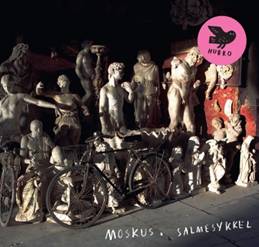 | Moskus - Salmesykkel (Hubro CD2518)
|
The three young members of the trio Moskus all had their grounding in the jazz department of the esteemed Trondheim Conservatory of Music which dates from 1911. In this, their debut recording they explore their own memorable melodies and compelling original compositions recorded at Atlantis Grammofon Studios in Stockholm. The title track translates to ?Hymn Bicycle?, referring to the harmonium/reed organ/ pump organ. Clearly influenced by EST, they cleverly allow, space, repetition, minimalism and progressive rock to inform their piano, bass and drums sound. Just as Esbjorn Svensson used oblique dissonant chords to build tension, pianist Anja Lauvdal employs a similar operandi in the highlight ?Nar det regne pa presten dryp det pa klokkarn? in a glorious cascading crescendo. Drummer Hans Hulb?km uses a variety of techniques which add to the textures of subtle earthy grooves, introspection or dark and eerie unease. If this truly collaborative sound is the trio?s starting point then Moskus is in for a very successful journey
   
|
Peter Wockner
|
| Back to Index |
| 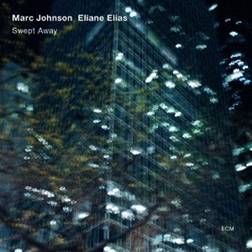 | Marc Johnson and Eliane Elias - Swept Away (ECM/Fuse)
|
This New York studio recording of a working trio led by bassist Marc Johnson is very much a melody-rich mainstream event, predominantly in slower tempos. Johnson?s wife, Cuban-born pianist Eliane Elias composed most of the songs, and co-wrote several with her husband. Long term associate, Joey Baron is on drums and Johnson has added the outstanding guest saxophonist Jo Lovano, in this sensuous and swinging collection. Lovano appears on five of the eleven tracks. The opener and title track is a trio only performance of quietude and space emphasizing Elias?s rippling lyricism and Johnson?s engagingly heartfelt bass solo. Lovano arrives on track two in a blues-infused, laid-back It?s Time, Elias?s tribute to the late Michael Brecker with whom she played in the group Steps Ahead. A pulsing One Thousand and One Nights by the trio employs an Eastern tinge and a rock-along feel from Barron?s drums. We?re firmly back in a dragged-out blues mode as Lovano leads into Midnight Blue for a relaxed, after hours, deep down excursion, an atmosphere maintained in the following track Moments, executed in a dreamy, romantic mood. The tenor drifts like a hazy smoke ring into When The Sun Comes Up, gradually strengthening with Baron?s quarter-note pulse as drums bob and weave for a swinging piano solo, before the piece reverts to a misty sax finale. In the trio number B is For Butterfly, there?s another strong, fast-running piano solo with solid bass underpinning, a hallmark of the collection. The leader?s bass has the final track: a pretty, solo re-working of the American folk song Shenandoah
   
|
John McBeath
Previously published in The Australian Oct 2012 |
| Back to Index |
| 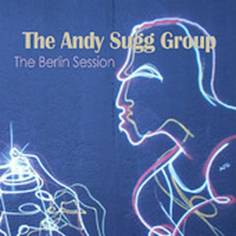 | The Andy Sugg Group - The Berlin Session (Independent/www.andysugg.com)
|
Melbourne-based saxophonist Andy Sugg is one of Australia?s most original, yet authentically evolved, post-Coltrane performers. In 2011 Sugg?s previous release Andy Sugg Plays Trane, commemorating the 43rdanniversary of Coltrane?s death, skilfully demonstrated that connection. This latest album has been a long time arriving; it was recorded in Berlin in January 2011 with Sugg?s daughter Kate Kelsey-Sugg on piano, and two Berliners: bassist Sean Pentland and Jan Leipnitz on drums. It was Sugg?s first visit to the German city he describes as ?a global musician magnet,? and felt that ?the city?s spirit was in the studio urging us on?. And what a free-flying inspirational spirit there is driving these eleven Sugg originals where the leader leaves aside his tenor and plays only soprano sax. The opener, Vignette has the soprano meandering languidly over rippling piano treble chords and quickening drum effects, as the energy builds, the soprano speeds, falling silent for staccato chords and repeating single note piano with bass and drums working busily. More rhythmic is Cecil T (for Taylor?) where drums drive the high velocity soprano?s explorations around tonal centres as the piano pounds dissonance. Berlin is a slow ballad in a minor key featuring just soprano with acoustic bass in cogent interplay, while For Lieb, dedicated to fellow sopranist Dave Liebman, successively pours out high pressure elongated racing runs
   
|
John McBeath
Previously published in The Australian Oct 2012 |
| Back to Index |
| 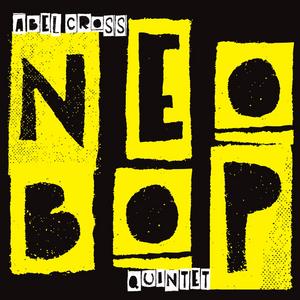 | Abel Cross Quintet - Neo Bop (Rufus Records RF102)
|
Young bassist Abel Cross has already commanded diversity in styles that most would dare only dream of. From work with singer songwriter Holly Throsby, he was a founding member of the successful contemporary Trio Apoplectic and the experimental 3ofMillions. Now with his own quintet, he is putting his stamp on the Be-Bop style with a string of his own wonderful originals configured adeptly to suit the Bop genre plus Woody Herman?s Broadway. Cross?s booming resonant sound reminded me of Scott La Faro but it is the piano-less instrumentation with guitar that gives this album a distinctive sound from the regular Bop outfits of the 40?s and 50?s period. With the inclusion of Phil Slater on trumpet, there is something very identifiably Australian about this sound despite the afro-American traditional head-solo-head convention. Peter Farrar?s dry almost woody tone on alto is a perfect foil for Slater?s sometimes breathy and other times rapid fire explorations. There is much to like about this for be-bop fans
   
|
Peter Wockner
|
| Back to Index |
| 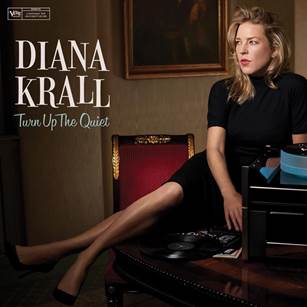 | Diana Krall - Glad Rag Doll (Verve 3710109)
|
The album opens with the early 1930?s dance tune made famous by the Guy Lombardo Band called ?We Just Couldn?t Say Goodbye?. With feather-weight lyrics like ?The chair and then the sofa, they broke right down and cried?, this tune was a definite mis-match for a young and earnest Sinatra but in the hands of Diana Krall, Carmen Lombardo?s light heartedness is restored. Indeed here lies the concept of this album; old pop tunes from the late 1920?s and 1930?s. Some have more charm than others such as ?Just like a Butterfly that?s Caught in the Rain? where you admire their sophisticated innocence and apply your imagination to fill in the blanks. Americana specialist T Bone Burnett is the producer. Some 1950?s authentic RnB material like ?I?m a Little Mixed Up? and ?Let it Rain? is thrown in the mix and not surprisingly, Krall sounds comfortable if not convincing throughout. Her lazy Elvis-like enunciation suits this material much more than the Great American Song-book tunes she has made her name from. Accompaniment is duo up to octet with the main focus on guitar or Krall?s spare piano. Marc Ribot is the featured guitarist and he brings moods that sway from country to swing to rock and roll and the grooves get nice and dirty thanks to bassist Dennis Crouch and drummer Jay Bellerose. Yes Krall might be looking further back than ever before but she has done so in a context that suits her to a T.
   
|
Peter Wockner
|
| Back to Index |
| Divergence Jazz Orchestra, Live at the Bald Faced Stag 29/7/12
What a pleasure to the ear and soul it is to hear a large group of instruments played acoustically in the same room. Every nuance and colour-shade floats up, as bold and brassy or as transparently wispy as the composer and the instrumentalist intends, entirely uncorrupted by the distorting mirror of electronic sound reinforcement.
This has long been the intimate joy of acoustic jazz, but when that joy is made manifest by a 17-piece jazz big band, it can be truly a thing of wonder.
The Divergence Jazz Orchestra ? the new large group put together by composer Jenna Cave and trombonist Paul Weber ? is one such aural wonder. The band was launched at Petersham?s Bald Faced Stag and showed great strength, colour and balance. On the night they needed all the strength they could muster to combat the sirens wailing by on Parramatta Road and the thud of Lucy De Soto?s blues-rock band in the front bar (only a thin wall away ? good timing, Bald Faced Stag?).
The distractions thankfully didn?t detract from the music of the Divergence Orchestra at all. Created to perform the works of Cave and other Australian jazz composers, the band is made up of some of Sydney?s brightest young players, which gives it a high-energy, bright-eyed attack, evident throughout the eleven tune set.
Opener, the aptly named ?One Woman?s Day of Triumph? roared the band into life, after being counted off by the pixie-like Cave. The enthusiasm of the group was evident from the first beat ? they came out of the gate warmed up and ready to go ? and carried through bristling solos from Chris O?Dea on baritone sax and Peter Koopman on guitar.
The Sal Nistico-inspired ?For Miro? showed Cave?s swinging side with the band putting out a sweetly traditional sound, trumpeter Paul Meo playing a beautiful solo ?in the cracks?. ?And Then There Was One? rocked between 7/4 and 6/4 timing without losing its latin-rock groove, Evan Atwill-Harris signifying on tenor.
One of the aims of the Divergence Orchestra is to give voice to the work of Australian jazz arranger-composers. Nadia Burgess?s crisply swinging ?34 Degrees South? was the first non-Cave choice for the night. Later in the set the band would play two tunes by Cameron Earl (conducted by the composer), ?Run Run? and ?Ruby?s Tune?. All proved to anyone with ears that this music is alive and well and living in Australia.
Jenna Cave has a nice line in incorporating West African grooves in her arrangements. ?A Stranger in Helsinki? was based on a joyous township high-life jive that was infectious (we were here to listen but I saw every toe tapping) and taken to a far hotter place than Helsinki by Justin Buckingham?s weaving soprano solo. Later in the set every soloist in the band got to fun it up on Cave?s snaky 9/8 Afro-jump ?Odd Time in Mali?, with drummer James McCaffrey ?putting the pots on? (as people far hipper than me are allowed to say).
The well-travelled Cave has drawn inspiration from her globe-trotting jazz odysseys. She is also a rare jazz arranger in that she hasn't forgotten the power of rhythm. ?Jazz Euphoria on Frenchmen Street? finished the night on a jumping New Orleans hand-jive note, as funky as only a Nawlins-inspired gumbo can be.
The whole room smiled. The Parramatta Road sirens and Lucy De Soto?s blooz didn't matter anymore; they had been blown far far away. The Divergence Jazz Orchestra had belied the fact that this was their first gig through a vibe of fun, happy work and collective groove. Long may they sail.
|
|
by John Hardaker. |
| Back to Index |
| 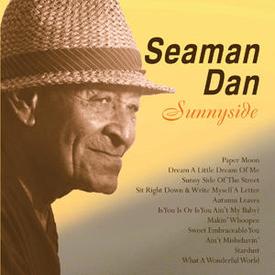 | Seaman Dan - Sunnyside (Steady Steady Music TL1007)
|
Seaman Dan is an 83 year old singer from Cairns. Its his natural charm offensive that elevates this album from a mere novelty event into quite an entertaining affair. Born on Thursday Island, he is living proof of the global infectious migration of the Great American Songbook, for it was during WW2 that he first heard the music-making of the Afro-American soldiers stationed in Cairns in North Queensland. This is the music that made a lasting impression on this deep-water pearl-shell diver and boat skipper. Nat King Cole remains a life long influence to this day. Tunes like ?Autumn Leaves? and ?Embraceable You? are not crooned the way you?d expect. This is ?Ailan? style or Island style complete with ukes, guitars, banjos and mandolins. There are numerous string players and while the liners only list the musicians in alphabetical order, they all meld together into a marvelous South Pacific sound. You can almost feel the sea breeze flowing through the arrangements which sometimes inhabit country and western, Texan swing, Hawaian and Dixie. The odd chorus of Torres Strait creole adds genuine exoticism and the version of ?I?m Gonna Sit Right Down & Write Myself a Letter? easily skittles Paul McCartney?s recent version. Yes Dan doesn?t quite reach all the desired notes but the charisma and warmth in his voice carries the weight of these classic pieces. Johnny Nicol makes a guest vocal appearance on what is the highlight ?Is you is or is you Ain?t my Baby? sounding sometimes like Willie Nelson
  
|
Peter Wockner
|
| Back to Index |
| 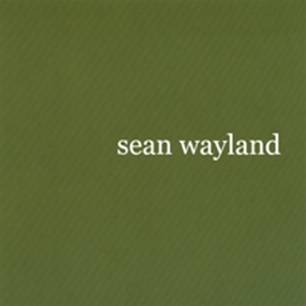 | Sean Wayland - Slave to the Machine (Volumes 1 & 2) (Independent/www.seanwayland.com)
|
Sydney born pianist/composer and bandleader Sean Wayland, after playing and recording in Australia, relocated to New York in 1999 and has since appeared on over forty recordings, sixteen as bandleader. He has extensively toured the US, Europe, Japan, China, Hong Kong, New Zealand and Australia and worked with many internationally renowned artists including Madeleine Peyroux, Wayne Krantz, Jochen Rueckert, James Muller, Matt Penman, Dale Barlow, Phil Slater and a host of others. In Australia Wayland studied at the Sydney Conservatorium with Mike Nock, Roger Frampton and Judy Bailey, then continued his studies in New York. He has always maintained a high profile in Australia, visiting frequently to collaborate with virtuoso Australian guitarist James Muller and others. Wayland?s individualistic approach has evolved from his appreciation of such influential recordings as Herbie Hancock?s Thrust and John Scofield?s Blue Matter. He feels strongly that funk rhythms and electric instruments are fully worthy of serious exploration and in these two current collections has created his own programs on a computer-based Nord Modular G2X synthesizer, as well as adding a bewildering range of keyboards from a Steinway piano to an Oberheim Xpander. The instrumentation goes from solo piano on Solo Piece, to several quintet sized tracks adding guitar and tenor sax to Wayland?s trio. In all, around seventeen different musicians contribute. The opening track on Vol 1, Belt Parkway with its swirling synths, darting acoustic piano and clever rhythmic syncopations from drummer Mark Guiliana, sets the scene. Guiliana plays often with Wayland who believes the two have developed a unique way of playing together, and that Guiliana ?has revolutionised improvised drumming.? More of a bop flavour surfaces on Boxing Day with greater use of the piano and a flashing solo from James Muller?s guitar plus an energy-stoker from Donny McCaslin on tenor. Volume 2 has a unique take on John Coltrane?s Giant Steps, as Wayland improvises on synth over Guiliana?s pulsing, constantly inventive rhythms. An atmospheric synth wash opens QY70, named after the Yamaha instrument used, again with Guiliana?s drumming, and bassist Matt Penman, while totally different personnel appear for a quartet?s jaggedly staccato Superarc, featuring bassist Jeff Hanley
Since Volume 2 mostly consists of trio tracks, greater interest and variety is contained on Volume 1, which includes Australian vocalist Kristin Berardi in a duo with piano, and synth effects, on a sereneDevotional, constructed with unusually effective harmonies. Guitarist Wayne Krantz features on Marshmallowspowering a Pat Metheny-like solo against Wayland?s alternatively floating, then stabbing, synth. Although Wayland says he wanted to straddle multiple styles, he hasn?t quite achieved the variety he intended, despite the participation of numerous talented players and his own vast technique and exploratory agility. Finally the electronica gives this otherwise impressive collection an overall synonymous flavour
   
|
John McBeath
Previously published in The Australian |
| Back to Index |
| 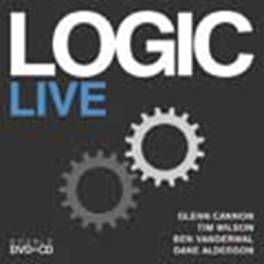 | Logic Live (Double DVD/CD) (Independent/www.logiconline.net)
|
This fifth album from Melbourne jazz/fusion quartet, Logic is the first live release in the band?s eleven-year history. The DVD was shot live during the recording at Bennett?s Lane. There?s also some bonus footage from the group?s 2010 Asian tour of fourteen cities, and interviews with the band members. Four of the seven tracks are by saxophonist Tim Wilson, two by guitarist Glen Cannon, with one contribution from bassist Dane Alderson. The style here is reminiscent of Chick Corea?s early seventies group Return To Forever; although Logic?s instrumentation is different the high energy, jazz fusion, electric rock-referenced with a dash of world influences approach is fundamental to both groups. The fast guitar and alto theme statement of North Gatecould easily have been penned by Corea and although the tempo soon relaxes the solo ideas flow with constructive power from both front liners, accented by Ben Vanderwal?s drums. Ella-gance is a soulful ballad, opened by Wilson?s poignant alto, then enlivened by Cannon?s faster-moving guitar, as Alderson?s electric bass underpins with a countering line. Speedy bass and quick, smart drums begin The Hierarchy and remain prominent with skilful, agile bass lines from Alderson introducing Wilson?s climax-building alto solo. A Shade of Jade is a bass solo, opening tentatively then moving through some figurative chords to create a pretty introspection. It?s back to a rocky, post-bop travelling theme for the final track, Gavatron. This features some clever, driving interplay between guitar, bass and bustling drums before the tempo drops for an impressive bass solo accelerating to an apogee of alto-led conclusion
   
|
John McBeath
Previously published in The Australian |
| Back to Index |
F
| 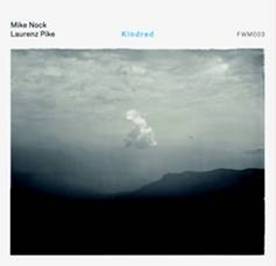 | Mike Nock and Laurenz Pike - Kindred (FWM/Birdland)
|
In a multifarious and highly celebrated career of more than fifty years, ex-Kiwi, now Sydney-based pianist, composer, mentor and bandleader Mike Nock, has appeared on well over one hundred recordings. These have ranged from solo piano, including classical works, to many different groups and orchestras. It?s no surprise then that Nock?s latest album is the slightly unorthodox duo combination of piano and drums in a totally improvised performance. Laurenz Pike?s drumkit abandons a solely rhythmic responsibility and becomes an instrument for percussive ornamentation and near melodic contributions of accents, conjunctions and punctuation. It?s a case of a grand old jazz master collaborating with a younger drummer from acclaimed post-rock, electronica outfit Triosk, now disbanded. This collection won?t appeal to everyone ? some might prefer a bass to have been included ? but the concept here is minimalist, allowing maximum tonal freedom, and Nock fully utilises this independence. The title track is representative of the session as with accompanying drum accents the piano paints a musical abstraction of thoughtful, classically referenced passages, pausing for sensitive percussive responses. At one point the harmonic progression leads quite naturally, if unexpectedly, into quotes from the traditional Irish folk song, Believe Me If All Those Endearing Young Charms.Unpredictable variety reigns throughout: All Most Blues uses an altered blues riff to push into new explorations, while Sleepwalking features a dreamy, wandering high treble against deeply murky bass chords and shimmering cymbals. A dissonant opening chord leads into beautifully flowing expectant sequences in Solstice, establishing a repetitive bass figure to conclude with soft bass drums
   
|
John McBeath
Previously published in The Australian |
| Back to Index |
| 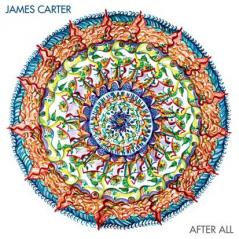 | James Carter - After All (Newmarket Music NEW 3307.2)
|
Not to be confused with the American multi-reed instrumentalist but this recording suggests a comparative talent. He has a bruising alto sound when he chooses to let it go however this release is all about finesse. On the opening tango ?Alone but not Together? Carter shows his available armory. The technical ability, fleeting from note to note like Bird, the bluesy growls and at other times feathery or simply just note-less flows of air. Seven of the nine are his originals but what I love most is the emotion in his phrasing. He brings the best out of his saxophone. Vocalist Mariel Koroibulu adds her voice (think Joni Mitchell) to the guitarist Christian Meyer?s ?Moments?. ?Animated? is a saxophone piano duo seemingly open ended and freer but in the end acts more like an improvised interlude than part of the overall narrative. There?s a sense of humour too; Carter awakens all with a startling honk in ?Time Continues? revealing his vast tone and robust ability. The quartet is made up of Daniel Sheehan ? piano, Ben Christensen ? double bass and Christian Meyer ? guitar. The absence of drums does not detract. In fact these melodic folk-like melodies do not yearn the drums at all and the bass is nicely up in the mix.
   
|
Peter Wockner
|
| Back to Index |
| 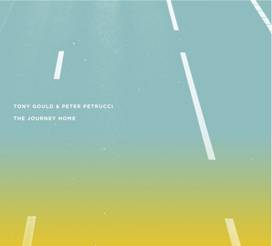 | Tony Gould and Peter Petrucci - The Journey Home (Which Way Music)
|
Here is proof that age difference is no barrier to successful collaborations. Further proof can be seen in another recent release by pianist Mike Nock and drummer Laurenz Pike. Pianist Tony Gould is now 71 years of age and has been collaborating with the younger guitarist Peter Petrucci for the past 25 years. Not surprising there is substantial intuitive empathy between these players, which is vital due to the chordal nature of both instruments. The sound is uncluttered and the tempos are slow and stately with both complementing each other. The Journey Home is their third duo album and its best described as a calming elixir after a hard day at the office. Without a doubt this will sooth the senses. Gould is at his lyrical best while Petrucci is at the peak of his artistic powers. The only detraction was that three of eleven tracks are embellished with synthesised strings which for me act like the musical equivalent of heavy breathing. Notwithstanding, the original compositions from both are wonderfully and melodically encapsulated into intertwined vignettes. There are solo pieces from each and a gloriously lyrical rendering of the lesser trodden standard For All We Know
   
|
Peter Wockner
|
| Back to Index |
|  | Matthias Schriefl - Six, Alps & Jazz (ACT 9670-2)
|
Matthias Schriefl is a rebel horn player and this is rebellious music. Rebellious, because the conventions of each element are discarded in preference of a ferocious cocktail of folk, funk and jazz using mainly brass and woodwind. The core of the folk music originates from Allgau; Germany?s southern-most tip in the heart of the Bavarian alps. Traditional folk and the young German?s originals make up the playlist. Schriefl plays trumpet, flugelhorn, sousaphone, euphonium and the instrument that provides the link to the region and demands the folk rhythms, the haunting alphorn. His trumpet style invokes fleeting images of Hubbard and James Morrison, while New Orleans and bop influences are juxtaposed into the compositions. Some ?tongue in cheek? vocals in German are superfluous and sometimes dampen momentum, but there are numerous highlights amongst the 14 tracks mainly when the sextet are augmented with guests such as tenor saxophonist Niels Klein
  
|
by Peter Wockner
|
| Back to Index |
| 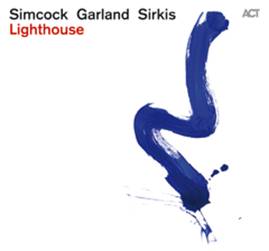 | Simcock, Garland, Sirkis - Lighthouse (ACT/Planet)
|
Formerly named The Lighthouse Trio this UK group has taken an egalitarian step to credit all three players, pianist Gwilym Simcock, saxophonist Tim Garland and Israeli drummer, now London-based, Asaf Sirkis. One of the overseas headliners at the 2012 Wangaratta Jazz Festival, the group puts out a most unusual trio sound, thanks to each player?s virtuosity, their integration, quality compositions, and especially the percussive effects from Sirkis. He plays an unusual set of shallower than standard frame drums, a small kick drum, tiny cymbals, and a variety of other percussion, including a Swiss hang drum sounding like a tuned steel pan. The nine compositions are shared equally between Simcock and Garland, with one,Weathergirls a compositional collaboration of buoyant joyousness featuring Sirkis?s hang drum with Simcock?s stomping, classically-influenced piano and high energy flights of tenor sax. Garland switches to bass clarinet for the opening of Above The Sun, and then takes up a soprano sax for a thrilling solo supported by the piano working brilliantly through the complex changes with faint echoes of flamenco. Speeding percussion opens Devilled to be joined by a fast and jagged piano theme which subsides into a slower pace for the entry of soprano sax before accelerating again with jabbing piano chords and its ultra quick post post-bop unison line of piano and soprano. Simcock?s Welsh background is evident in the final track, a slow lullaby entitled Tawel Nawr (Quiet Now) with Garland?s lyrical and soothing tenor playing a simple melodic theme and the piano gradually building more compound harmonies
    
|
by John McBeath
Previously published in The Australian |
| Back to Index |
| 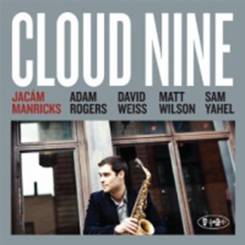 | Jacam Manricks - Cloud Nine (Positone/ http://www.jacammanricks.com)
|
Following his highly acclaimed 2011 release Trigonometry, Brisbane born, New York based saxophonist/composer Jacam Manricks has put together an all new group for his fourth album, comprising seven originals plus two others. The high quality of Manricks?s intellectually stimulating compositions is already established and two in this collection are especially interesting because they take existing numbers and cleverly re-format them. Loaf is based on the first part of Long Ago And Far Away and the second half ofI?m Old Fashioned, opening with Sam Yahel?s organ and Adam Rogers?s guitar along with Matt Wilson?s drums, setting a jaunty rhythm for an alto and guitar paired theme. And when the alto starts to solo it soars high into exhilarating harmonics with swooping runs to lead into equally galvanising guitar work. The other re-worked piece is Take The Five Train, based on John Coltrane?s Countdown, arranged in 5/4 time and it sets out with a speeding Coltrane?style unaccompanied alto sequence improvising over the original changes, an approach that is maintained later in Manricks?s solo now underpinned by the rest of the group. Trumpeter David Weiss is brought on for Alibis and Lullabies to contribute in unison with the leader in the opening and closing of a slow and aching melody, on which both alto and trumpet solo with empathy. A lesser-known Jobim tune Luiza, features a variety of skilful interplay between organ, guitar and alto whilst Wilson maintains soft but firm brushwork throughout. Jacam Manricks, heading a NY trio, is touring Australia and New Zealand during August and September
   
|
by John McBeath
Previously published in The Australian |
| Back to Index |
| 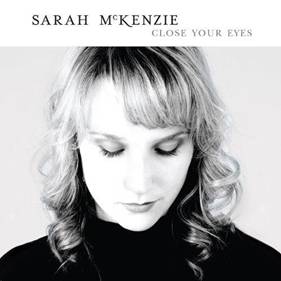 | Sarah McKenzie - Close Your Eyes (ABC/Universal)
|
For a twenty-four year old, vocalist/pianist/composer Sarah McKenzie has already achieved a great deal. She graduated in Composition at Perth?s WAAPA, winning several awards there, as well as a James Morrison Scholarship and now embarks on a scholarship invitation to Berklee College in Boston. Her 2011 debut album, Don?t Tempt Me attracted attention as a new young talent to watch, and was produced, as is this session, by Chong Lim of Australia?s Got Talent fame. The material here is much the same: jazz standards, pop songs, and a couple of originals, all arranged by McKenzie. From the outset, on the up-tempo title track, it?s obvious that this vocalist has a very good grasp of jazz phrasing and interpretation as well as competent ability on piano. Her arrangements are well constructed too with some fine solos by the likes of guitarist Hugh Stuckey, Eamon McNelis on trumpet and saxophonist Julien Wilson. While new interpretations of old songs are always welcome, care needs to be given to the spirit and intent of the originals. The re-working of Nat King Cole?s sensitive ballad, Too Young as a rock-along, mild stomper is not an improvement, but versions of Big Yellow Taxi, and I Remember You are more successful. Don?t Get Around Much Any More would have had more impact at a slightly slower tempo. The seldom-heard verse and subsequent refrain of I Should Care in an ultra-slow tempo works particularly well, demonstrating McKenzie?s capability to linger over and elongate lyrics in an expressive interpretation of a romantic ballad
  
|
by John McBeath
Previously published in The Australian |
| Back to Index |
| 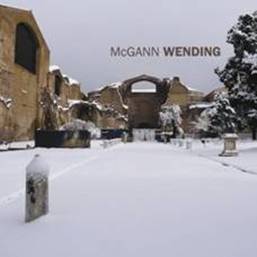 | Bernie McGann - Wending (Rufus/Universal)
|
Legendary alto saxophonist Bernie McGann has long been associated with drummer John Poch?e, playing in the Sydney scene since the late fifties and winning numerous awards. In a tribute to McGann?s longevity and unique contribution to Australian jazz this double album celebrates his seventy-fifth birthday. All ten quartet tracks feature McGann and trumpeter Warwick Alder; four numbers were recorded back in 2005 with Poch?e and bassist Lloyd Swanton. The remainder, recorded this year, brought in bassist Brendan Clarke and Andrew Dickeson on drums. McGann has lost none of his trademark abilities: the raw-toned edge, the unexpected leaps to the upper register, unorthodox lines and ceaseless invention are all here. If anything, McGann has increased emphasis on a more romantic style of lyricism, evident in ballads such as a beautifully expressive Sweet and Lovely where the alto?s aching melody statement has the trumpet moving in slow layers underneath. There is a well-controlled sweetness too in The Breeze and I, opening with a Latin beat and alternating to a grooving straight four as the two long-term associates expertly interweave trumpet and alto lines. Alder?s solos are strong contributions throughout the collection providing contrast in intelligent ? but not cerebral ? improvisations. McGann?s great soul piece, Mex is superbly executed as the two horns amalgamate with consummate precision in the joyous theme. The harmonised beginning to Paul Desmond?s Wendy is a triumph of voicing and timing between brass and reed and when McGann bites into his solo the tension climbs as his unique tone, innovative ideas, and faultless rhythmic feel combine for an exhilarating lift-off
    
|
by John McBeath
Previously published in The Australian |
| Back to Index |
|  | Craig Scott Quintet - Timeline (Rufus Records RF 091)
|
Rufus Records is becoming the label of choice for the long awaited or overdue debut. In recent times long term sidemen Warwick Alder and Andrew Dickeson have released albums as leaders and now bass stalwart and educator Craig Scott, whose career commenced in 1979 in the Keith Stirling Quartet has released a recording captured live at the Sydney Conservatorium Music Caf?. Recorded in 2010, Scott, in the liners, regrets having asked the audience not to applaud solos, nevertheless the sound quality could easily be mistaken for a studio recording. All six of the compositions were penned by Scott and two are taken at ballad pace which makes for a spritely listening experience in the Be-bop mould. The front line is made up of trumpeter Warwick Alder whose unrelenting focus on the middle and lower register never ceases to bear his organic and sometimes bruised fruit. Paul Cutlan on tenor and soprano is Alder?s foil and his soulful sound drips with empathy and expression. The quintet is rounded by the younger rhythm section of Tim Fisher piano and National Jazz Award winner Tim Firth on drums. Typically Craig Scott takes an understated approach on bass as leader and is even a little down in the mix. These tunes swing hard and are exemplary of the genre. The only regret is that it should never have taken this long
   
|
by Peter Wockner
|
| Back to Index |
|  |
Marialy Pacheco 11th August 2012 ? Coffs Harbour
Coffs Harbour music lovers were treated to the musical equivalent of an Olympic medal winner on a blustery, cold winter's evening Saturday the 11th August 2012 when Ms Marialy Pacheco played a solo piano concert at the Jetty Theatre.
Classically trained with three years post graduate study in composition, Ms Pacheco may practise three or four hours a day as a matter of course. Further to this, she has chosen to pursue her art in what may be the most demanding musical arena of all - improvised music. Ms Pacheco is steeped herself in the tradition of this music, and what tradition is that?
Solo piano performance goes back hundreds of years and may have reached its classical apotheosis with the playing of the likes of Franz Listz where astonishing technique may have become an end in itself. The instrument had by then also developed to the extent that we know today, where it is orchestral in its possibilities.
|
Some modern stylists approach it percussively - Cecil Taylor, Dave Brubeck - whilst others have a more lyrical, melodic style depending a great deal on touch - Bill Evans and the modern European school such as Bobo Stenson or Vassilis Tsabropoulos. But Keith Jarrett may have revolutionised 20th century solo piano playing with his performance on a Bosendorfer (baby grand) at Cologne at the Opera House on 24th January 1975. The record of this 67 three part improvised performance sold 3.5 million copies. He subsequently recorded the famous Sun Bear Concerts consisting of 13 improvisations performed in five venues in Japan now available on 6 CDs. Musicologists have sought to have Mr Jarrett transcribe his legendary Cologne (Koln) Concert but he has resisted as he says it was improvised "on a certain night and should go as quickly as it comes".
Such point of view is in the tradition of one of the greatest musicians of the last century, regardless of genre, Miles Davis who implored his musical colleagues such as John Abercombie, Keith Jarrett, John Coltrane, Dave Holland and Bill Evans, to "play your mistakes" meaning that above all else he wanted the individual feeling, and expression, and spirit of that musician in that moment to prevail - technical perfection of the well tempered scale was not the goal. The instrument is the means to an end, and that end is the individual voice of that musician, in all its beauty and its uniqueness.
Ms Pacheco did not disappoint in Coffs Harbour. A lone artist on a proscenium stage faced with creating in the moment is a brave artist. Charlie Parker said there is boundary line to music but there's no boundary line to art, and to be in the moment with a major, perhaps great, artist, is a privilege and a moment to be relished. Scary too.
Visually a red sheath dress and a glorious smile telegraphed her love of what she does, and we imagined her saying " Come let me take you for a little while, away." And take us she did.
It was a very well thought out programme of music, with some standards, Jerome Kern's "The Way You Look Tonight", and "Mambo Inn" by Frank E Flynn, and some Latin American compositions reflecting her Cuban roots, and some originals.
It was in the originals, in my view, that Ms Pacheco revealed the extent, the depth and range of her artistry. SUNSHINE STATE (Ms Pacheco is a Brisbane resident) had percussive power and inventiveness and expression that revealed both her rhythmic sensibility - almost a given in this music where the African contribution emphasises the rhythm of the heart and the body - and her compositional talent. The right hand improvisation over the complex rhythmic left hand vamp, was breathtaking.
Her composition BREMEN was the one "tears of joy" moment I had. This work revealed her touch,it is poetic, and the bell like notes ringing out was reminiscent of Keith Jarrett in his ballad playing.
DANZA PARA 4 by Emiliano Salvador was a dramatic and technical triumph, stunning in its accomplishment and with such a perfect ending.
Not to misunderstand - any music lover would have enjoyed this concert, as it was varied enough to make connections and appreciate on a number of levels - whether it was the infectious rhythms, or familiar melodies of some pieces or the bravado of speed and technique on others.
Even so, I heard echoes of Lennie Tristano, and Bud Powell in her playing perhaps due to her command of the lower end of the keyboard. She says " I'm a fan of my left hand".
Attempting to translate the performance into words is a futile exercise for a non musician. As a music lover though it is impossible not to be drawn into the joyous creative world of Ms Pacheco, who, as you watch her play, moving to the rhythms of the music, which is just an extension of her very being, is something to behold. Despite a piano chair she could not adjust, a cold stage, a less than perfect piano and a hand microphone (for verbal introductions) that did not work, she managed to give the audience a taste of what is possible through her hands and her heart - we were witnesses to the blossoming and growth of a major artistic talent. To get an idea of her work I could do no better than suggest you buy her Australian CD SONGS THAT I LOVE on Pinnacle Music, recorded at the Judith Wright Centre of Contemporary Arts, Brisbane 16th December 2010. A significant release because it was performed on Kawai GS50 Baby Grand in three hours with NO SECOND TAKES and no editing.
To my knowledge the only other Australian improvising pianist that is able too occupy the same space as Ms Pacheco, is Andrea Keller who is noted particularly for her original compositions.
Ms Pacheco won the 2012 Montreux (Switzerland) Festival solo piano competition, the second largest musical festival in the world. Talk about Olympics.
|
| by By Ian Muldoon |
| Back to Index |
|  | Phil Treloar - Of Other Narratives - tracings in the ground of. Collective Autonomy / Volume 3 - Primal Communication (www.feeling-to-thought FT 010)
|
Volume three of this aural documentary series is about the successful integration of the broad spectrum of orchestra and large ensembles with the focussed minutia of the improvising quartet. Proving the two can become united like a marriage, but they can simultaneously stand independently beside one another within a purpose built notated composition. These two separate recordings were made in 1988 and 1989, interestingly, prior to the formation of the Australian Art Orchestra (AAO). Each extend over 30 minutes. Treloar's writing style reminded me of that age old ideal of Duke Ellington who wrote both passages or movements and compositions with particular soloing musicians in mind. Both of these pieces contain particular highlights that showcase this idea.
?Primal Communication' starts with the Conservatorium of Tasmania String Orchestra igniting like a jet engine, slowly propelling up to velocity, reaching a point where the sound hangs in an elongated vacuum above the voicing of bassist Steve Elphick, who introduces Treloar on drums before the saxophones of David Ades and Mark Simmonds arrive in harmony and then break into free dialogue. Simmonds then unleashes a fiery solo followed by Ades, who crafts gradual momentum and allows his expression to be instinctively influenced by bass and drums. Meanwhile the Orchestra re-enters after twelve minutes with passages of tension followed by meandering mystery to surprising punctuations and highly dramatic crescendo's before Elphick's bass throws out a fat groove for Treloar to latch onto. And so it re-develops. This is substantive work. The ensemble then generates a post-bop groove before Ades' slick, bluesy licks soar into dizzy heights, underpinned by Treloar's tight hi-hat. Simmonds then emerges from the dust more aggressive and freed- up by broken rhythms, plunging heavily into open ended improv eventually squeezing his tenor into high pitched territory at 28 minutes. The Orchestra re-enters with a series of buttressed support of Simmonds still soaring in the stratosphere, permanently blurring the border of improv and notated sounds. Following the climax, a dialogue of elation occurs between Quartet and Orchestra before the performance is appropriately bookended by no less than two minutes of applause. More than just satisfaction, this excitement was probably retained to give the 2012 and future listeners an insight into the level of connectivity achieved between the artists, the composition and the live Tasmanian audience.
Whilst the second piece Variations on ?Directions Changing' is more definitively broken into decisive movements, it is no less compelling. Whilst Treloar is unerringly focussed on creativity and the generous spirit within his music, no one should fall into the trap of overlooking his technical brilliance either. Two other high impact artists include pianist Michael Kieran Harvey (who has also performed with the AAO) and trombonist Simone de Haan. The trombonist's dramatic muted solo is like a Shakespeare soliloquy such is its vocal qualities, many of which would not be out of place in a Preservation Hall jazz band. The Conservatorium of Tasmania String Orchestra was conducted by Christian Wojtowicz.
   
|
by Peter Wockner |
| Back to Index |
|  | Mike Stern - All Over the Place (Heads Up)
|
Jazz-rock guitarist's guitarist, Mike Stern's fifteenth album, this year's All Over The Place, features a dazzling circus of today's most in-demand players, but is held together by Stern's vision and truly groovy compositions
The throwaway title All Over The Place is really not so throwaway ? the album features songs written to feature specific players and goes to some piquant African and Latin locales along the way. Opener ?AJ' features Anthony Jackson on contrabass guitar. Jackson wahs and pops one of the nastiest bass lines I have heard for a while under the whoops and hollers of solos by Stern and tenor-du-jour Chris Potter
?Cameroon' sets up a high-stepping African highlife strut for West African bassist/vocalist Richard Bona to bass/vocalise around. ?Out Of The Blue' glides along on the bass figure of John Coltrane's hymn ?A Love Supreme' which seems to inspire the bejesus out of Randy Brecker who shoots trumpet sparks in his solo
The ghostly Iberian-flavoured ballad ?As Far As We Know' features Grammy-winning bassist Esperanza Spaulding doubling Stern's gut-string line with her vocal, with a rising passage in the melody that calls to mind the rise in Samuel Barber's Adagio For Strings. Its porcelain delicacy is booted out of the way by ?Blues For Al', a Thelonious-Monkish abstracted blues featuring Miles Davis's last great drummer Al Foster and another Miles disciple, UK bassist Dave Holland
Stern's playing on this blues is full of booze and joy ? and this is what has kept his fans right there all the way. In a music that can be overweeningly precious at times, where each note is held up as a pearl, Stern digs in and gives us rough diamonds out of the coal. His obvious joy in getting his mutant Telecaster to squeal, moan and insinuate is in your face
The guitar is the instrument of the modern musical era. Stern says of the instrument, "The guitar tends to keep you open-minded, because you hear it in so many places. You hear it in rock, in country, in pop, in funk, in classical, you hear it in jazz, you hear it in so many kinds of music that you can immediately identify it on one level or another."
Over all these years Stern is still excited about the guitar, and it is his joy that keeps us pretty excited too. All Over The Place goes beyond virtuosity to a place where real music can happen
    
|
| By John Hardaker |
| Back to Index |
| Neneh Cherry and The Thing - The Cherry Thing (Smalltown Superjazz)
There is a nice circularity in nu-soul diva Neneh Cherry making an album with Norwegian/Swedish free jazz trio, The Thing.
Neneh is the daughter of Don Cherry, the jazz pocket-trumpeter who stood shoulder-to-shoulder with Ornette Coleman in the pioneering days of Free Jazz in the 1960s. The Thing named themselves after a Don Cherry composition. (And in case you are ever asked the question in Free Jazz Trivia: The group are the only free jazz ensemble working today who wear stage uniforms; they perform clad in t-shirts from Ruby's Barbecue Restaurant in Austin, Texas.)
Also, Neneh Cherry was born in Sweden and The Thing have long associations with the US (their bassist lives in Austin Texas)
Both Cherry and The Thing bring a wide-ranging set of influences to their collaborative recording, The Cherry Thing. Cherry (best known for her 1989 genre-scaring hit album Raw Like Sushi) is at home with anything, it seems, re-shaping it to her liquid flow phrasing ? very Jazz in its own way. Check out her re-animation of Iggy Pop & The Stooges' ?Dirt' ? she slithers and stabs along the full length of the ominous riff beneath her voice The Thing ? Mats Gustafsson (saxophones), Ingebrigt H?ker Flaten (double bass), and Paal Nilssen-Love (drums) ? are a real band: a triple-headed noise generator that rises and falls with Cherry's ululations and hisses. The sparse instrumentation works entirely in their favour ? the moods go from jazz-cool to unhinged skronk and back again, The Thing breathing organically like the beast it is. Their version of the Madvillain/MF Doom cover, ?Accordian', shows exactly this turn-on-a-dime dynamic ? the intro is Cherry chopping up the phrasing over double bass; long horn tones soon threaten from afar; soon the build is hitting its top with voice and phrases and rhythms criss-crossing and bouncing off each other. The excitement really flies right out of the speakers because this music is organically made ? like anything good in Jazz, it happens for the performers at the same time it happens for we listeners ? and is all the fresher for it. But it is not all freak-out. There are performances of great beauty ? the stately ?Dream Baby Dream' (originally from NYC noise-punks Suicide) ? has echoes of 50s doo-wop nostalgia under its dense harmonies. ?Golden Heart' ? a rethink of one of Cherry's father Don's composition ? mesmerises on a minimal repeated theme that grows and dies and grows and dies. Quite a trip. But it is the rockers that got to me. The Thing are known for their wild, almost punk-energy shows and the version here of Martina Topley-Bird's ?Too Tough To Die' rattles along on a hard-as-nails backbeat. And I have already mentioned The Stooges ?Dirt' ? but it is so good it deserves a second mention.
The Cherry Thing concludes beautifully (continuing the circularity of it all) with one of the few vocal pieces Don Cherry's Free Jazz comrade Ornette Coleman ever wrote ? the achingly lovely space-blues ?What Reason Could I Give?' Neneh Cherry's resigned but spirited vocal delivery is the essence of jazz singing ? patina'd with the brown-blue-black skin of the blues just like Ornette meant it
    
|
| by John Hardaker |
| Back to Index |
| 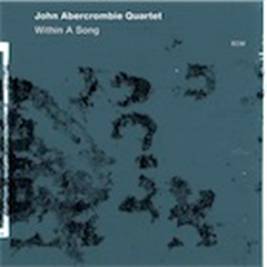 | John Abercrombie Quartet - Within a Song (ECM/Fuse)
|
These two US top flight jazz talents, guitarist John Abercrombie and saxophonist Joe Lovano are very familiar with each other's work having played together since the nineteen nineties. Abercrombie featured in the Melbourne International Jazz Festival in 2010 with a quartet including the drummer from this session, Joey Baron. Lovano appeared at the Wangaratta Jazz Festival in 2008 with guitarist John Scofield. Abercrombie, now aged 67, is a guitarist for all contexts with a plaudit-laden career of over forty years, appearing on countless numbers of recordings. The guitarist's previous work has encompassed a range of styles: free jazz, ballads, blues, jazz-rock, soul, bop and post-bop but this album reprises tunes from the nineteen sixties that were influential for a teen-aged Abercrombie. He says: "It was this music that spoke to me . . . it was like finding a new home." The guitarist is an excellent composer writing melodic lines of great eloquence, and wrote three of these nine tracks including the title Within a Song. It's a post-bop theme based on the chord changes of the standard Without a Song, which is quoted during Lovano's extensive, fast-running solo, and concludes with a segue into the original's melody line
Nearly all of these pieces are taken at slow tempos, allowing Abercrombie's softly spreading chords to support the tenor's impassioned flow. Ornette Coleman's Blues Connotation is a medium paced exception where Lovano accelerates into occasional double time and Abercrombie's solo uses none of his rock-oriented style ? absent throughout this album ? concentrating instead on a carefully constructed, almost cerebral narrative. The session's bassist Drew Green and drummer Joey Baron, feature on Miles Davis's Flamenco Sketches, Baron providing a cymbals wash for Lovano's intense playing, over Abercrombie's delicate chords and annotated ornamenting
The tricky timing opening of Bill Evans's Interplay utilises a guitar counterpoint to the tenor's unorthodox line against hustling drum work ahead of a swinging bass solo leading into Abercrombie's strong groove of cascading chords and take-off runs. When Lovano's tenor returns he adds aggressive substance with raw-edged phrases, upper-register shrieks, and speedy grooving passages. One of the prettiest ballads is a dreamily, languid interpretation of Jimmy McHugh's Where Are You, in which the tenor's opening floats the song away onto a tranquil millpond of introspection. When the guitar solo takes up that mood, Lovano weaves a soft filigree around it and Baron's gentle brushes and satiny cymbals extend the reverie. Another beautiful ballad, Sometime Ago opens with a languorous guitar in an ultra-slow tempo, which the tenor almost imperceptibly doubles, taking drums and bass along. Again there are some impressive drum accents in perfect accord throughout. This is a valuable collection by two old masters in a nostalgic, relaxed setting of expert craftsmanship
   
|
by John McBeath
Previously published in the Australian |
| Back to Index |
| 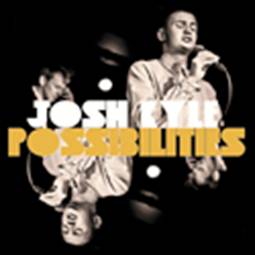 | Josh Kyle - Possibilities (Jazzizit)
|
The first, among several striking aspects of this debut album, is that Australian vocalist Josh Kyle was just 24 years of age when he recorded it in London in 2010. The level of Kyle's ability and maturity suggests a degree of experience well beyond his years. Returning to Melbourne after a two-year stint in London, Kyle has already attracted acclaim. His style is expressively original in a high alto range, with faint echoes of Mel Torm? in the ?velvet fog' quality of his voice. The material is varied and includes several standards with new lyrics by Kyle. One of these is Wayne Shorter's Is It Yes Or Is It No where Kyle is joined by established UK vocalist Claire Martin for some smart harmony work and swinging twin voice exchanges with guest guitarist Jim Mullen. The album opens with a sensitively interpreted a capella chorus of Stardust before the excellent backing trio arrives led by bassist/arranger and producer Geoff Gascoyne. With Tom Cawley's keys and Ralph Sammins on drums throughout, the album accompaniment is outstanding, particularly Cawley's solo on the title track, Possibilities by Victor Feldman with Kyle's added lyrics. The vocalist displays his consummate timing on The Thrill Is Gone imparting empathetic phrasing and meaning to what could have been just another overworked standard. Jimmy Rowles's Driving on The 502 taken as a slow ballad has the misty quality of Kyle's vocal ornamented by Mike Myllari guesting on muted trumpet. A test for any vocalist's pitch and expression is Thelonious Monk's Round Midnight and Kyle handles it particularly well with perhaps the later choruses slightly overdrawn
   
|
by John McBeath
Previously published in the Australian |
| Back to Index |
|  | John McAll's Black Money - Alter Ego (Independent)
|
Not quite as well known as his illustrious brother Barney, Melbourne pianist/composer and bandleader John McAll has released a follow-up to his 2009 recording Black Money. The latest personnel, a sextet, playing six of McAll's originals, comprises some of the top names in Australian jazz, and the high standard of solos throughout is evident from the funky opener, I Love Black and I Hate Love. In that lead-in track soloists are: McAll on circumfluent piano with fast flourishes, followed by the wonderful tonality and exploratory murkiness of Adam Simmons's contra alto clarinet using an occasional musical snort, and finally David Rex's lift off alto speeding through the changes over Sam Bates's punctuating drums. The fastest tempo of the collection, and the longest piece, is Refugee, in an Afrobeat style with a smartly arranged declamatory theme. This again features Rex's skilled alto soloing, as well as Jordan Murray's agile trombone, Simmons's flying contribution on tenor sax, and the leader's fluid pianistic ideas, all culminating in an impressive, theme-oriented drum solo. True to its title, Mirrors begins with a shimmering piano, moving to a pretty ensemble theme with semi-classical overtones and a romantic trombone solo, plus a descriptive piano sequence that refers to (reflects?) the opening, amidst swinging improvisation. The abdomen-moving sounds of the contra alto clarinet are advantageously employed by Simmons's ingenuity in the sinister Eastern undercurrents of Assassin. These are all strongly illustrative compositions, expertly arranged and played, both in the solo work and in the section passages, each having an individual voice with something of interest to say
   
|
by John McBeath
Previously published in the Australian |
| Back to Index |
| 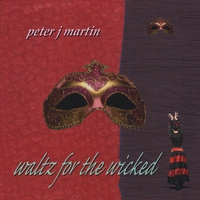 | Peter J Martin - Waltz for the Wicked (Independent)
|
Peter J Martin is one of those Australian guitarists deserving wider recognition. His delicate style hasn't attracted the masses seeking the slashing screaming guitarist. Ironically he first came into notice on experimental jazz explorations like UK based Clive Stevens' ?Caparius' and after his return to Australia, the jazz rock group ?Scra'. He also spent two years in Madrid studying classical guitar. Not to mention his session work with others like John Farnham and Jon English. In recent years his focus has been on music education at Lismore's Southern Cross University. Needless to say, Martin is a well rounded musician. There are subtle travelogue references in his phrasing reflecting many influences, which in a way match the diversity of his writing styles of these 11 originals. Indian, Middle Eastern, Latin, Flamenco and even Bensonesque voicings work their way into his solos without overwhelming the individual flavour of each tune. The intent of the album is not to burn but when it does the players maintain beauty and taste. He's chosen Dave Sanders on drums and some fine brushwork along with Steve Russell on piano as the core trio. Russell in particular displays sensitivity to the leader at this restrained level. The string quartet adds contemporary classical overtones on two pieces which become the highlights of the disc. On ?The Shape of Clouds to Come' the quartet along with James Cox's percussion provide a pensive but urgent texture against an introspective guitar while on ?Undercurrent' the quartet set up an expansive tension prior to the guitarists elongated melodic lines.
   
|
| by Peter Wockner |
| Back to Index |
|  | Lily Dior - Let's Talk About It (www.lilydior.com)
|
The third album from Dior is a revival of the roots of her career. Having been discovered by the late funk and soul guru Jackie Orszaczky in the early 1990's, she joined his ?Godmothers' and was influenced by the singer greatly; hence the presence of a number of Orszacky's associates including the effervescent trombonist James Greening who contributed to the horn arrangements. Dior had a hand in nine of the eleven originals on this album. Her writing habits are quite organic. She builds from riffs on the piano; framing, mapping and then collaborating with other creative artists like Brendan St Ledger, Daryl Aberhart, Ben Fink and Sean Wayland (an old ?Banana' cohort from the 1990's). Maybe it's this simplistic approach to her writing that makes the tunes so engaging and truthful. The profound relationship between melody and lyric leaves these tunes permeating long after the disc has ended. The themes cover unrequited love, lost love but also contemporary issues like the environment and the human act of generosity. ?Shadow Man' is a ballad at the album's most soulful core. A heartbroken lyric of unrequited love is sparingly accompanied by a Brendan St Ledger piano over a lush string quartet. Ultimately though its Dior's captivating voice, that pure diction and deep ability to groove showcased on "Love's like a River" that ebbs between a 4/4 groove and a meandering string arrangement reflecting loves changing cycles
Without a doubt Lily's finest album to date
   
|
| by Peter Wockner |
| Back to Index |
| 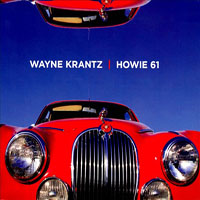 | Wayne Krantz - Howie 61 (Abstract Logix ABLX 34)
|
The jazz rock guitarist in recent times has introduced his own vocals to his records namely in his last release Krantz Carlock Lefebvre but here he adds his untrained vocals to seven of the ten tracks with surprising success. Yes most are spoken words rather than melodic refrains but like his guitar playing his vocals and lyrics are uncluttered and cut to the chase. The title track is inspired by Dylan's ?Highway 61 Revisited' while the only cover on the album is by Ice Cube, the trio version of ?Check Yo Self'. Krantz uses minimal effects while Keith Carlock's intensive backbeats washed with saturating cymbal splashes somehow never manage to sound too busy. Balance is the key to this disc and Krantz's ninth album unlocks that key. His unorthodox melody-less vocal is best highlighted on ?I'm Afraid that I'm Dead', interspersed with viral glitch electronic tweets, its an eery duo with Krantz on block chord piano and Yasushi Miura's electronics. Australian electric bassist Tal Wilkenfeld appears on two tracks. She opens ?Son of a Scientist' solo against the tight kit of Vinnie Colauita. Krantz's oblique harmonies and wicked fret board work are all on display but one gets the feeling Krantz is just as comfortable showcasing each varied ensemble which includes stellar talent like David Binney, James Genus, John Beasley, John Pattitucci, Kenny Wolleson and more. Uninhibited and powerful, these are the sort of sounds to turn a rock audience onto jazz
    
|
| by Peter Wockner |
| Back to Index |
| 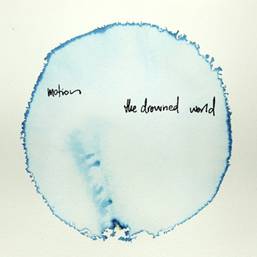 | Motion - The Drowned World (Listen/Hear Collective)
|
Following their 2010 release Presence, Australian quintet Motion have recorded eight loosely structured compositions and collective improvisations occupying a space between simplicity and abstraction. Leader and saxophonist Andrew Brooks, recently returned from a year's playing and studying in Berlin, is also co-founder of Listen/Hear Collective. The label specialises in stylistically diverse musicians creating eclectic, accessible music outside of single genre definitions. The group says it draws influences from jazz, experimental improvisation, electro-acoustic and rock styles. Motion's music is certainly uniquely original from Berish Bilander's relaxed and elongated piano opening on Little Things to Sam Zerna's motoring two note bass, Hugh Harvey's mysterious cymbals and Brett Thompson's intersecting guitar on First Short, to introduce an ethereal saxophone. All of these tracks have subdued, often solo beginnings that build mounting expectation as other instruments arrive and contribute to the esoteric mix. This is evident in Liberty Stole My Shoes, but just as a climax feels imminent, the suspenseful mood changes direction with saxophone floating romantically, before excitement and raw intensity build again and the suggested crescendo arrives as a powerful finale. Haunting bass notes and long eerie saxophone sounds with sparse piano treble chords introduce Puzzle as percussive effects inject an odd rhythm which lurches forward with occasional abstract Latin echoes to a restrained, softly lyrical conclusion. Atmosphere and mood trump form in all of these pieces, demonstrated again in the dream-like sequences of Disarmed where a sustained effect of reverie is achieved, but building to abrupt, strident, ?snap-out-of-it' passages for the conclusion
   
|
by John McBeath
Previously published in The Australian |
| Back to Index |
| 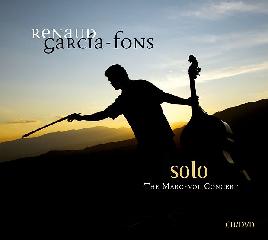 | Renaud Garcia-Fons - Solo ? The Marcevol Concert (Enja/Planet)
|
This album sounds sometimes like solo acoustic bass and at other times like a trio or quartet of various instruments but in fact all sounds on the CD/DVD were generated by French bassist Renaud Garcia-Fons on one, customised five string double bass. His astonishing results are achieved by clever use of loops, pre-recorded electronics and percussive sounds made by finger tapping or slapping to accompany the solo bass either bowed or pizzicato. But Garcia-Fons ingenuity doesn't end there. In this live concert he presents "an imaginary journey through time and space," playing his original compositions and improvisations of Eastern, African, South American, European middle ages, and baroque styles. With a muted string sound Kalimbassopens with the solo bass sounding very like the African Kora (a lute-like instrument) and as the theme speeds it is joined by an African drum rhythm, and then over the top comes what sounds like an arco viola. A quite different effect is produced for Marcevol executed in a medieval style on what might just be a cello, while Voyage a Jeyhounabad opens sounding very like a solo oud and continues in a middle eastern modality. Rock Wandering approximates rhythmic rock guitars behind a fast moving viola with gothic hints, and the viola sound takes on a Celtic yearning romanticism in Far Ballad.
   
|
by John McBeath
Previously published in The Australian |
| Back to Index |
| 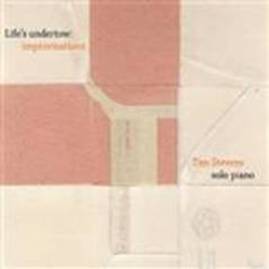 | Tim Stevens - Life's Undertow (Rufus/Universal)
|
This second solo album from Melbourne pianist Tim Stevens, following Freehand in 2002, was made possible by an APRA award in 2011, and beautifully recorded at Sydney's Studio 301. All of these ten tracks are spontaneously generated, each with an impressive flow of compositional ideas, almost all of them in a classical style. An exception is The Line's Tension, which after an out of tempo, meandering but staccato opening, develops into a strongly swinging middle section with a rhythmically running bass line. The other tracks draw exclusively on classical influences. Synapse proceeds in a stately study of Bach-like construction, while Wear The Trousers employs sequences of light dissonances and fast jagged runs reminiscent of Stravinsky. Evident throughout is Stevens's sensitive delicacy of touch, especially in his control of the upper treble. A repetitive treble figure, embellished by deep, resonant chords in Campervan of Dreams perfectly captures a dreamlike travelling narrative. Slow, majestic chords open This Never Happens, which after gathering passages of increasing atonality eventually descends into a dissonant harmonic conclusion. Subsistent Things features a theme of expressive chromatic figures progressing into a dark exposition and then emerging into a delicate, spaced abstraction utilising the high treble. This collection of improvisations is thoughtfully introspective, and quite impressive as a totally unstructured album of improvised, on the spot compositions. It takes the listener into a varied and often quite beautiful soundscape of ambience, contemplation, and a gamut of moods. Apart from one track it's not exactly music of an established jazz genre, but has much to offer, especially in terms of the pianist's perceptive originality
   
|
by John McBeath
Previously published in The Australian |
| Back to Index |
| 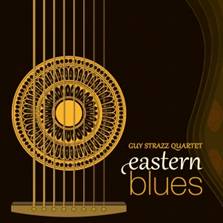 | Guy Strazz Quartet - Eastern Blues (Rufus Records RF 90)
|
Eastern Blues comes on the back of other releases from saxophonist Sandy Evans and saxophone quartet Compass, exploring cross cultural possibilities with music originating from Southern India. Matt Keegan is another Sydney jazz artist exploring this concept which is receiving a renewed traction on the Australian scene. Guy Strazz is no new comer however. He's taken influence from Ravi Shankar, the Coltranes and Shakti to name just a few over a long period. His approach is more subtle than others mentioned here and is coupled with a strong sense of the improvisational elements and less on the percussive elements of the music. Strazz is no slashing, screaming guitarist. Rather, he's the guitarist's guitarist. Eastern Blues is also a guitar fan's disc with National Jazz Award winner Aaron Flower's electric in the mix. Not surprisingly, Strazz shares compositional duties with Flower and bassist Hugh Fraser contributing a piece each to the disc. The Pat Metheny piece ?Unquity Road' is also given a spatial, brooding and pensive reading. The fluid drumming of Toby Hall completes the quartet, while percussionist Rodrigo Galvao is added to "Tina the Healer", a piece that showcases the heaviest Indian influence. Strazz's "Silk Road" is once again recorded and must be considered one of the most attractive jazz guitar melodies this country has produced. A solo effort, without bass and drums, Strazz accompanies himself rhythmically after a lengthy introspective prelude. Impressive
    
|
| by Peter Wockner |
| Back to Index |
|
Melbourne International Jazz Festival
Various venues, Melbourne. June 1-10 2012
This 2012 festival had more international diversity than any previous year. Performers came from Italy, France, Norway, Spain, Japan, Belgium, Cuba, Ethiopa, Germany, Argentina and Israel, plus the obligatory Americans, as well as 180 Australians. Broader global content alone does not guarantee high quality but the program offered a varied selection of many outstanding international artists and at least two virtuosos. One of these was acclaimed American tenor saxophonist Chris Potter fronting Sydney's 17 piece Jazzgroove Mothership Orchestra, itself notable for numerous talented soloists. They played mostly Potter's originals where the composer's solos demonstrated, in a wide, warm tenor tone, an amazing ability in both technique and improvisation. From intricate fluidity in harmonics working effortlessly down into skilful mid-range phrases, high velocity elongated runs, plunging to unexpected staccato bass notes, it was an astonishing, virtuosic performance.
Potter also appeared with a trio led by the legendary American pianist McCoy Tyner. Now 73, Tyner is a jazz icon, having played with John Coltrane's classic 1960s quartet for five years, and appeared on many influential recordings. In the Melbourne town hall Tyner shuffled stiffly to the piano stool, where for his entire performance he pressed the sustain pedal to the floor. Sadly, it became obvious that the fire and flexibility had gone from his playing, and although the sidemen, including Potter, all played well, they were unable to rescue the concert from disappointment about what might have been. Still the near capacity audience gave a standing ovation, perhaps paying respect to the legend rather than this performance.
Another virtuoso is French bassist Renaud Garcia-Fons. With his Arcoluz Trio, Garcia-Fons played his customised five string acoustic bass, taking the instrument's unexplored capabilities to genius level. Using a variety of techniques, including tapping and bouncing the bow on the strings, Garcia-Fons produced sounds that approximated, in addition to the double bass, a viola, cello or oud, as well as hand drumming effects on the body of the instrument. In pizzicato mode his fingers flew across the strings like tiny, speeding dancers. Both guitarist and percussionist colluded throughout many variations in passionately interpreted flamenco styles.
Japanese pianist Hiromi also has a mountain of bewildering technique but alas, a miniscule of expression. Her percussive style is an odd combination of classical pop, jazz-like echoes and vaudeville. A tiny figure with huge hair, she gyrated at the piano like a wind-up doll as impossibly fast chromatics and finger-cracking arpeggios flew in every direction, but meaningful music needs more than flourishes and pianistic histrionics.
From the burgeoning jazz scene in Israel, saxophonist Eli Degibri's quartet played all Degibri originals with one exception: the standard, Lover, a highlight at rapid speed, featuring exchanges between the leader's tenor sax and Aviv Cohen's intelligently hectic drum work. Many of the compositions had an Eastern European modality, and all were played at high energy levels with searing emotional depth building to striking climaxes. Pianist Gadi Lehavi, a 16 year old prodigy, displayed a surprising level of maturity, soloing skilfully and substantially backing the leader, particularly in a beautiful Latino ballad.
Another festival highlight came from American Trumpeter Terence Blanchard, a multiple Grammy award winner. Playing a customised Monette trumpet, enabling easier high note access, Blanchard soared across the trumpet's range with expressive intensity. He produced quick, smart, post-bop lines reaching way up high, and slower mid-range soulful moods, sometimes using half-valving to great effect. The sidemen were superb, especially drummer Kendrick Scott and gifted young pianist Fabian Almazan who played a brilliantly disguised solo intro for Autumn Leaves featuring deep ruminative chords and spaced, flowing treble excursions to offer a perfect gateway for trumpet and tenor sax entry. As well as this concert, Blanchard, along with other headliners, took part in a Monash University series where students played arrangements with the master players.
The festival was brought to an exuberant close by American vocalist Dee Dee Bridgewater. A consummate professional, she emulated several Billie Holiday characteristics, notably in Fine and Mellow, and Don't Explain, but her style has a more vigorous approach than Holiday's and her stage moves are boisterously energetic. Her re-interpretation of Coltrane's My Favourite Things worked well, and featured a fine soprano sax solo.
Other festival notables included young Ethiopian pianist Samuel Yirga, US saxophonist Oliver Lake with Tarbaby, Hammond organist Dr Lonnie Smith, Australian saxophonist Jamie Oehlers with US bassist Robert Hurst, legendary Australian saxophonist Bernie McGann, and US Jazz/Hip Hop pianist Robert Glasper.
|
| By John McBeath |
| Back to Index |
| 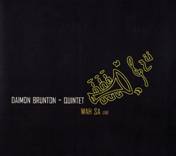 | Daimon Brunton Quintet - Wha Sa Live (Newmarket Music NEW3305.2)
|
The towering figure of jazz/funk trumpet superman Freddie Hubbard casts a very long shadow over the latest release by Melbourne's Daimon Brunton and his quintet. Brunton's fourth album ? entitled Wha Sa (Chinese for ?already done') ? was recorded live at Northcote's Open Studio between November 2010 and February 2011, after a long gestation period involving various abandoned recordings and changing lineups
It is no surprise that Brunton settled on this set of recordings and this lineup (Greg Lavell plays keys on three of the five tracks, Olaf Scott on the other two). The band is hot and cohesive, and the recordings sparkle with all the musical flashes that only a truly live performance can. The five track LP is warts and all, but with a band this ON, even their warts can be pearls
Of the five, three tunes are Brunton originals and the other two are covers ?Herbie Hancock's jamming warhorse ?Chameleon' and Freddie Hubbard's highly influential ?Red Clay' from 1970.
Of the Hubbard connection, Brunton says "After Sky Dive (1972) he seemed to move away to more pop-oriented music, but I was interested in exploring what might have been if Freddie had continued down the jazz path." Brunton's playing has all the snap, crackle and pop and Woody Shaw-style edge to his tone to carry this off, where a lesser trumpeter would get tangled up in the blistering runs or just plain lose their mojo. This is high-energy stuff. Maybe Brunton could have suggested a little more of Hubbard's buttery lyricism now and again (check out ?Delphia' on the original Red Clay album) amongst the nuclear blasts, but it's his call
The same can be said of the moods and grooves across Wha Sa ? they seem a little out of the same funky electric-jazz bag; a ballad or blues would be nice ? if only to hear this superb quintet attack something more introspective.
That said, the places Brunton's combo goes are pretty tasty ? the impromptu boogie-shuffle (beautiful held by drummer Adam Donaldson) that grows out of the middle of ?Chameleon', Pat Farrell's tasty bass intro to the same tune, Stella Skinner's silvery guitar lines during her solo in the 13 minute closer ?They Know Not What'
In fact, apart from Daimon Brunton, it is guitarist Skinner that shines throughout Wha Sa ? her bright Scofield-like lines during the opener ?Wha Sa', her neo-bop interjections during ?A Happy Coincidence's chase chorus with Brunton and Scott, the spaces she leaves in her ?Chameleon' solo ? Skinner is a guitarist to watch
Daimon Brunton uses words such as ?firepower' and ?intense energy' when talking about Wha Sa and says "This time it was all about energy, and that's why we had to record it live." So it is clear what the band was going for ? did they hit it? I think you will agree they hit it hard ? hard, bright and funky. Check it out
Daimon Brunton and the band will be touring nationally from 28 June through to 15 July. Details are at his website http://www.daimonbrunton.com
   
|
| By John Hardaker |
| Back to Index |
|  | Tim Willis and The End - Keep Your Chin Up (Newmarket Music)
|
Melbourne guitarist Tim Willis and his band, The End, have as much rock going on in their jazz as jazz in their rock ? and who cares anyway? The End's second album, Keep Your Chin Up is eight tracks of sublimely creative music that packs a funky rock-edged punch
Openers ?Chers Amis' and ?Save Me From The Rednecks' are a pair of great rockers ? the first brisk with a tautly unfolding jazz solo from Willis, the second a muggy half-time skank ? that have everything we knew and loved from their 2011 debut album, The End: the tough rhythm section of double-bassist Gareth Hill and drummer Nick Martyn, the unusual twinning of the alto and tenor saxes of Jon Crompton and John Felstead, and the heavy powerchords/fleet jazz lines of Tim Willis
But it is the third piece, the evocatively named homage to Willis's partner ?Lying On Her Bed Listening To Steve Reich' that shows how far the band has evolved in the short time between The End and Keep Your Chin Up. The piece is built on a lattice of stabbing eighth-notes that fade in and out, leading to a remarkable middle section where the band passes these eighth-notes around almost mechanically, yet to extraordinary effect ? mirroring the music of minimalist maestro Reich
Extra horn player Jack Beeche is brought in for the meshed sax harmonies of Jon Crompton's piece ?The Rose' which rolls along on a heavy blues-boogie shuffle over which Willis solos entirely unhinged but at the same time in complete control. Title track ?Keep Your Chin Up' has a strutting swagger that reflects its positive title (Willis dedicates the album to his sister's courage during her battle with breast cancer). ?It'll Be Ok? No It Won't' calls to mind 70s proggers Van Der Graf Generator more than any Jazz artist I can think of.
Like rock, jazz never ever really needs ?saving' ? but groups like The End and original thinkers such as Tim Willis can, by their youthful vigour, hugely invigorate the art form
   
|
| by John Hardaker |
| Back to Index |
This follow-up to the quintet's 2011 self-titled album continues Melbourne guitarist Tim Willis's credo of saving jazz from extinction by incorporating elements of rock into a jazz format. Not that jazz really needs saving, but the idea is authentically explored and The End achieves the amalgamation as well as anybody in the country and with highly original ideas. Mercifully decibel blasts are totally absent and although Willis's guitar is rock-oriented it is loaded with progressive, distortion-free ideas. The line-up remains unchanged with alto and tenor on the front line by Jon Crompton and John Felstead respectively. Nick Martyn's drumming, while preserving echoes of rock, steers clear of drum machine robotics and Gareth Hill on bass uses recognisable riffs that are embellished by skilful arrangements. Save Me From The Rednecks takes a clever shot at country rock in a stomp along style with the two horns working in inspired counterpoint, building to an ascending four chord ensemble riff underscored by bustling drums. A dragged-out beat sounds perfectly geriatric for Grandma, as does the bass solo that introduces Crompton's outreaching alto. The title track puts the jazz-styled alto solo, followed equally by the tenor, both atop an insistent thudding riff from bass, drums and guitar. Willis's guitar leaps to life on Chers Amis moving dextrously all over the fretboard across the instrument's range and then laying out a substantial backing for the flying horn solos. This collection is a fitting addition to the earlier album progressing the group's innovative blending of jazz and rock
   
|
by John McBeath
Previously published in the Australian |
| Back to Index |
| 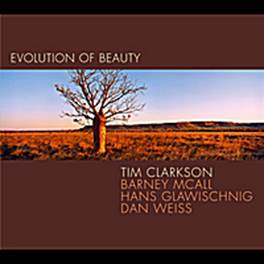 | Tim Clarkson - Evolution of Beauty (Dangerous Music Records DMR0001)
|
When aspiring jazz players find themselves in New York City there is often a natural desire to record with local musicians with whom sometimes they have never even played with before. On most occasions there is mixed results from such meetings but on this recording which happened to occur quite spontaneously, the stars seemed to have aligned themselves. This is Tim Clarkson's second album as a leader having recorded with the alto and tenor saxophone on debut. He has now found the tenor is more natural for him having studied with New York City's Mark Turner. Australian pianist based in New York Barney McAll also forms part of the core quartet on this album contributing three compositions. The feeling is in contrast to Clarkson's debut with an air of understatement in his playing that ultimately forms the concept for the whole album. His playing achieves an aim of ?stillness' in the air and this is certainly evident in all but three of the 10 tracks. Thats not to say the rhythm section doesn't rumble away underneath the horn. Certainly this space in the compositions and the arrangements allows the dynamics to swirl and dart from artist to artist. Textural might be an overly used term to describe contemporary jazz but drummer Dan Weiss plays his role in enhancing the textural qualities of this recording. Just when you expect him to move into overdrive, he reigns in, allowing the music to breathe a life of its own. While Hans Leischwig's virile bass reacts, prompts, supports and showcases all in one package. Some of these meandering melodies were ?one takes' which adds to the rarefied feeling of the recording
   
|
by Peter Wockner
|
|  | Vijay Iyer Trio - Accelerando (ACT/Planet)
|
Following acclaimed US pianist Vijay Iyer's trio release Historicity in 2009, comes the same group's latest. Iyer, the son of Tamil immigrants, studied western classical music for fifteen years on violin, beginning at the age of three. A gifted academic with degrees in mathematics, physics, and a PhD in technology and the arts, Iyer began playing piano by ear and is largely self-taught on the instrument. He has published various scientific works, including research on music cognition, and he lectures in composition, improvisation and performance at several American universities. Accelerando follows a similar format as the trio's earlier release with bassist Stephen Crump and Marcus Gilmore on drums, although here the music "is based on dance rhythms," adapted from Duke Ellington, Herbie Nichols, Henry Threadgill and Michael Jackson plus Iyer's own compositions. The music is stylistically divergent, from the lightning piano runs and cracking drum solo on Iyer's Actions Speak to the slow gospel chords of Ellington's The Village of The Virgins, or arcoed bass and mysterioso piano of Bode. Herbie Nichols's Wildflower opens with a pizzicato bass statement before Iyer works over the original's compressed chromatics and airborne arpeggios moving into bass versus treble dissonant chord clashes. The stabbing piano melody line of Henry Threadgill's Little Pocket Size Demons is cleverly counterpointed by arcoed bass and heavily accented by busy drums
   
|
by John McBeath
Previously published in The Australian May 12 |
| Back to Index |
| 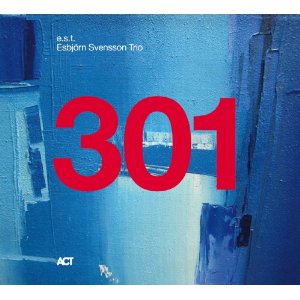 | Esbjorn Svensson Trio - 301 (ACT/Planet)
|
This album is the second of two recordings from the final sessions by the Swedish trio known as e.s.t, during their 2007 Australian visit, in studio 301 Sydney. It must be their last, since the leader, pianist Esbjorn Svennson, died in a scuba-diving accident in 2008. Founded in 1993, e.s.t defied easy categorization, although their music has identifiable Nordic roots, and employed jazz, rock, techno, multi-tracking and classical elements. In addition to Svennson, the band featured Dan Berglund on double bass and drummer Magnus Ostrom. They listed Thelonious Monk, classical composer Bela Bartok, and rock band Radiohead as influences. The electronica used is mainly for atmospheric effects, rather than distortion or reverb, and the track Houston The 5th utilises these features throughout setting a windswept, mysterious, squalling Scandinavian soundscape. Three Falling Free Part I begins with a wandering, introspective piano and bass, eventually adding drums to take up a gentle rhythm. In some ways e.s.t is like a Nordic version of The Necks but without the Australian group's incessant repetition. The most rhythmic, and longest track The Left Lane, weaves a strongly jazz-informed piano theme into a climactic trio swingfest before a temperature-lowering slow passage introduces a melancholy bass solo, gradually bringing the tempo up to speed again for the piano to fly towards a skilful bass solo as a calming conclusion
   
|
by John McBeath
Previously published in The Australian May 12 |
| Back to Index |
|  | Phronesis - Walking Dark (Edition/Planet)
|
This fourth album from the UK/Scandinavian trio led by bassist Jasper Hoiby refers to a live concert series Pitch Black, played in total darkness as a dedication to the leader's visually impaired sister. Pianist Ivo Neame and drummer Anton Eger added three compositions each to Hoiby's six originals, giving the collection a Nordic Noir atmosphere, strongly rhythmic mostly and with extensive Eurojazz classical influences. Solo passages from both bass and piano are often fugue-like, but with a pulse and brushed drums evident though quietened, as in Zieding which moves through several variations of such sequences. American Jesus opens with a hurrying, repetitive piano theme driven by busy, clickety drums and cymbal splashes, then lapses into flowing introspection before the drums pick up the original speed, pushing bass and piano along to an abrupt conclusion. A bass pattern leads in Suede Trees as the piano ornaments lightly, and the bass solo moves quickly and adroitly before plunging to pedal notes under a hectic brush solo. The title track has the bass moving sinuously under the piano, then in unison as the pace quickens and classical style motifs come to the fore before a staccato close. Two lengthy uptempo bass solos packed with dextrous ideas enliven Democracy after a vaguely chronometric opening, returning to a dreamy sequence before a racy lead up to a big chord finish
   
|
by John McBeath
Previously published in The Australian May 12 |
| Back to Index |
|
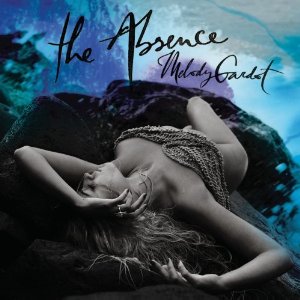 |
Melody Gardot - The Absence (Decca Records)
|
The Gardot story is one of triumph over the adversity of pain and suffering. Having been hit by a red light runner in 2003, she discovered her musical talents while seeking alternative methods of therapy to aid her recovery following numerous serious injuries resulting from the accident. For anyone who has read about the struggle of Gardot and how she has forged a pathway to a better life despite this struggle, it should come as no surprise that she now sings of the struggles of a refugee. A young African girl named ?Amalia' who is bravely seeking a pathway to a better life. A pathway Gardot knows only too well but one she has proven exists. These originals were penned by the songwriter from influences gained from travels in Lisbon, Argentina, Brazil and Morocco. She is sometimes compared to Nina Simone but Gardot has her own sound and style. This release is pleasing as she has never delved deeper into the emotional depths of her soul. ?Absence' is pure Gardot, the slow tempos, her trademark way of gliding off the note, the almost whispering voice, the controlled vibrato, the pretty and sometimes haunting mournful melodies shimmering over Sambas, Tangos and neo Fado rhythms. Gardot also shows us another side when she gets guttural and sweaty on ?Goodbye'. Overall this is a polished affair and Gardot has surrounded herself with stella musicians including Peter Erskine on drums.
   
|
|
by Peter Wockner./td> |
| Back to Index |
|  | Tony Gorman - Tony Gorman's Monday Club (www.mondayclub.com.au)
|
Whether the underlying composure of this music is imposed by the physical limitations of Gorman is immaterial, it's still brazen, daring, exciting and yet reflective. The Monday Club has become an outlet for Gorman's undiminished creativity when he, Stephen Morley ? French horn, Mary Rapp ? cello & bass and Boyd ? bass clarinet, gather to improvise. This two disc set is comprised of two separate recording sessions. The Domestic Appliance Sessions deals with the ?Heater', the ?MRI', and the ?Percolator'. ?Heater' reminded me of ?In a Silent Way', in that silence has been dealt with acoustically in the most passive and unobtrusive way. You literally get the picture of an old bar heater. Using a variety of methods on their instruments, the sounds creak and crackle following ignition and then you almost feel the glow and radiation of the heater through the soft drones of Gorman's alto clarinet combined with Morley's quirky French Horn and the deep underscore drone of Boyd's bass clarinet. Appropriately, ?Percolator' simmers, bubbles and gurgles away under the steam of the quartet. On the second disc titled The Macquarie Sessions, the quartet is joined by Paul Cutlan on clarinets and James Greening on pocket trumpet and trombone. Yes a larger sound but the glorious subtleties remain, especially on ?I've got the Blues, Goodbye'
   
|
by Peter Wockner
|
|  | Barney McAll - Graft (Jazzhead HEAD146)
|
Barney McAll's seventh album is a far reaching affair that stylistically ties a number of issues and musical timeframes into one cohesive fabric. Graft is as much about musical history, the various means of sound creation of the 21st century and future directions, as it is about compelling jazz piano improvisation. Yet miraculously, digital samples, wordless choral arrangements and piano improvisation meet at one destination and happily sit comfortably and sometimes disturbingly, together. ?Nostalgia for the Present' opens with a narrative of the possible future of social interaction on the internet with voice enabling technology containing obvious glitches ? " I can be myself around you, isn't it?" " 20,000 of my close friends are, friends" " I have a lazy eye". The melody has a beautiful vibraphone line by Dale Gorfinkel that instrumentally asks "Is this really where we are heading?" Titles like ?Jazz Epidural' and ?Blood USB' raise just as many questions as they answer but throughout, the music remains highly accessible possibly reaching a crescendo in the fitting final piece (the only piece not penned by McAll) by Abbey Lincoln ?The Music is the Magic'. Gian Slater's choral arrangements have a life of their own and turn this tune into an exultant soulful aural experience
    
|
by Peter Wockner
|
New York-based Australian pianist Barney McAll is notable as much for his innovative projects, as for his outstanding performance ability. This latest album, some of which was presented at the 2011 Wangaratta Jazz Festival, must surely be his most grandiose work to date, involving beat programming, ten musicians, vocal soloists, plus Invenio, a sixteen voice choir. There are many passages where McAll's piano excels, swinging strongly, floating dreamily, playing substantial chordal sequences, or ornamenting the voices. However, the enormous task of arranging so many vocalists, soloists, and instruments has resulted in a lesser production than might have been desired. A reverential air pervades, exemplified in Nostalgia for The Present where a recitation against a collegiate chorale style of massed voices moves into a slow rhythmic instrumental sequence established by piano, bass and drums, when the wordless choir returns interspersed with musical effects. SexMagikDeath opens with a staccato piano bass riff and continues under the angelic-style chorale for most of the seven minute track, although at one point the piano breaks away into a grooving solo. A travelling style Jazz Epidural is saved from being something of a plain tramping song by an eventual change to a slow tempo, and again by McAll's inventive piano. Sia Furler's solo vocal work inFirefly is lyrical and expressive where much of the backing, apart from the conclusion, is instrumental
  
|
by John McBeath
Previously published in The Australian May 12 |
|  | Skii Harvey - Bound by History (www.skiiharvey.com)
|
She may be a late starter in terms of her own album releases but the sound of the voice is the revelation that proves Harvey has experience on her side. The singer/songwriter who started out tinkling at her mother's upright piano in a Redfern flat has released her third album full of her own tempting originals. Her voice exudes the history of soul as well as the sweat and toil of a career that can only come through the hard knocks as well as the triumphs. Tina Harrod is another voice that comes to mind exploring this soul/blues genre. Harvey's voice leaps out of the backing vocal lines with bravado and her originals are distinctively steeped in the tradition of bittersweet lament ? "she's taken your trust and left you cryin". Harvey has chosen a stellar cast including Mark Taylor saxophones, Simon Sweeney trumpet and Phil Scorgie bass
  
|
by Peter Wockner
|
| 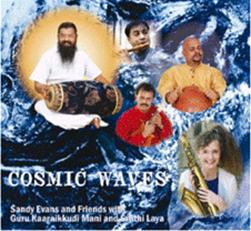 | Sandy Evans and Friends with Guru Kaaraikkudi Mani and Sruthi Laya - Cosmic Waves (Underscore Records 12EX001ACD)
|
Saxophonist Sandy Evans has immersed herself deeply into the sounds and the spirit of South Indian and Carnatic music since touring India in 1996 as part of the Australian Art Orchestra. It was on that tour that she first met her mentor and principal collaborator on this album Guru Kaaraikkudi Mani. Guru Mani is a master of konnakol and the Mridangam drum. His konnakol technique indeed emulates the timbre and resonance of his drum, while the percussive force of Mani's konnakol is pronounced with great authority in commanding vocal soliloquy's while at the same time exudes a warmth and honesty. Guru Mani leads the Sruthi Laya Quartet ensemble which includes U.P. Raju on electric mandolin, B.V. Balasai's bamboo flute and V. Suresh's earthenware Ghatam. "Eagle Landing at Cape Leveque" soars with the fervour of this cross cultural collaboration when Evans's tenor lines are ?answered' or sometimes ?confirmed' by B.V. Balasai's heavenly bamboo flute during a number of call and response conversations. Meanwhile the drones are both hypnotising and tension builders, preparing you for a state of ecstasy when Guru Mani's drum finally unleashes that groove. Evans has committed to a long and studied journey and this album represents the fruit of that commitment. Her playing is assured and natural and she exhibits an even greater tendency to explore, especially during one on one dialogue with B.V. Balasai. The cover is adorned by a satellite image of planet earth recalling Coltrane's similar artwork on "Cosmic Music" released posthumously in 1968
    
|
by Peter Wockner
|
| 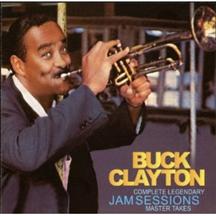 | Buck Clayton - The Complete Legendary Jam Sessions: Master Takes (Solar Records 4569904)
|
Originally produced by the legendary John Hammond and George Avakian for Columbia Records these jam sessions from 1953-56 led by Buck Clayton, Count Basie's greatest trumpeter, remain the high water mark for what was to become known as mainstream jazz. Drawing on mainly swing-orientated stylists, such as trumpeter Billy Butterfield, and acknowledged greats in tenor giant Coleman Hawkins and drummer Jo Jones, the music is superb, inspired soloing backed by spontaneous riffing. It included one masterpiece, Robbins Nest, and a memorable How Hi The Fi (based on How High The Moon) with bandleader Woody Herman guesting. Superlative and timeless.
    
|
by Kevin Jones
|
| 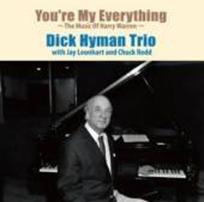 | Dick Hyman Trio - You're My Everything (Venus VHCD 1053)
|
Tasteful, elegant, stylish; three words which sum up virtuoso pianist Dick Hyman, a musical veteran of more than 60 years with a masterful command of all styles from ragtime to bebop. In his beautifully recorded debut for the Japanese label, Hyman with touch and melodic instinct pays tribute to Harry Warren, one of the greatest of American songwriters, expertly backed by bassist Jay Leonhart and drummer Chuck Redd. There is so much to enjoy; the vigorous swing and invention of 42nd Street, the Garnerisms of At Last and the tenderness of the title track. Pristine sound, pristine music
   
|
by Kevin Jones
|
|  | Trombone Shorty - For True (Verve B0015586-02)
|
Although it is not the instrument he is noted for, Troy Adams is also a fine trumpeter, just one of several instruments he plays with his band, Orleans Avenue, on this entertaining follow-up to his 2010 Grammy-nominated debut album Backatown. The guest artists, such as bassist Lenny Kravitz and guitarist Jeff Beck, are not really needed although this disc is obviously aimed at a wider audience. The sound, with its genre-defying mix of funk, R&B, hip hop and jazz, is aggressively energised with stabbing brass bursts by "Shorty" on trumpet and trombone. The fiery opener Buckjump with the Rebirth Brass Band is a real blast
  
|
by Kevin Jones
|
| 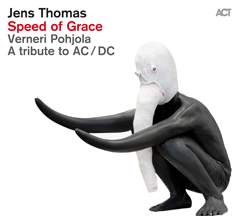 | Jens Thomas - Speed of Grace (ACT 9509-2)
|
German pianist Jens Thomas plays a variety of keyboards and sings on this tribute to AC/DC with guest Finnish trumpeter Verneri Pohjola. Despite the overlaying and production, the disc retains a live and in the moment feeling. All but two pieces are the rocker's classics stripped back to skeletal form. No heavy metal just sombre ballads. No screaming vocals or guitars just Thomas's unpretentious mid-range yearnings and quaint falsettos. Pohjola's breathy trumpet fits the bill in this minimalist setting. I discovered dark introspective lyrics I didn't know existed. Cleverly, Thomas abbreviates the final "You Shook me all Night Long" leaving you wanting more.
   
|
by Peter Wockner
|
| 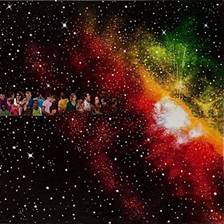 | Ben Hauptmann - Yum Yum Tree Records
|
The Melbourne based guitarist won the 2010 Freedman Fellowship and used the proceeds to release this debut digitally with additional limited vinyl pressings. Hauptmann's originals are unique but, there are two other elements which set this apart; the double drumming of both Evan Mannell and brother James and the lyric-less vocals of the dreamy Gian Slater. The compositions set the mood for the artists to swing from heavy fusion to reggae to southern banjo pickin country and back to rock
Lavishly produced, Hauptmann's music is as sparkling as the night sky using a breadth of global references producing strikingly original effects
   
|
by Peter Wockner
|
| 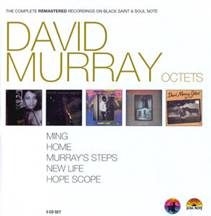 | David Murray Octets - The Complete Remastered Recordings on Black Saint (CAM London BXS 1010)
|
This five CD set features between 1980 and 1991 including Ming, Home, Murray's Steps, New Life and Hope Scope. Murray, one of the most recorded saxophonists in jazz sometimes polarizes his potential audience with his chaotic and persistent high register searching but it's this decisive freedom that ultimately defines Murray's sound. His writing for Octet takes tradition from Ellington and Mingus and harmonic complexity from Ornette Coleman while the rhythmic elasticity required of the players gives that unmistakable Murray signature, this becomes less intense however with Hope Scope. The presence of Henry Threadgill and Olu Dara of the early recordings personifies the Octets flexibility
    
|
by Peter Wockner
|
| 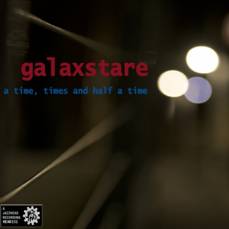 | Galaxstare - A Time, Times and Half a Time (Jazzhead HEAD 151)
|
Sydney tenor saxophonist and composer Richard Maegraith is a deep human being. A committed Christian and free-thinking artist, his work has always resonated with a sophisticated spirituality while maintaining a heartfelt directness. Whether it be blowing tenor with the Australian Jazz A-list ? James Morrison, Sean Wayland etc ? or whether leading his own ensembles, his voice and soul are unmistakable.
For their new album, The Richard Maegraith Band has become the intriguingly titled Galaxstare. The album title is equally thought provoking ? ?A Time, Times and Half a Time'. For this album ? recorded live at Sydney's Sound Lounge ? the personnel remains the same as 2007's buoyant ?Free Running' but you can hear the development from Track One
And what a Track One it is! ?Romans VII' snips along in a clipped Latin groove before relaxing down into a languorous swoon of jazz vocal; the track moves back and forth from one tempo to the other throughout ? this band really breathes. Throughout the album, the spicy doubling and great interplay of Maegraith's horn and Kristin Berardi's vocal again reminded me of Chick Corea's early 70s band with Flora Purim, before the synths moved in and Purim moved out
And like Chick Corea, Maegraith is not afraid to move beyond of the bounds of whatever constitutes jazz in his time, (he refers to Galaxstare's music as "Jazz-ish sort of music; call it what you will"). His pairing of voice and tenor with Gary Daley's accordian and/or Rhodes makes for some otherworldly results.
For the title track, ?A Time, Times and Half a Time', this otherworldliness goes beyond anything I have yet heard. The track is dedicated to Japanese friends of Maegraith's, survivors of the 2011 tsunami that wrought such indescribable havoc across Japan. Switching to bass clarinet and using only the live resources of his band, Maegraith creates a vision of universal pain, wonder and depth. It is one of the most startlingly spiritual creations I have ever heard, Ligeti-like in its suspension of time and space
We are snapped out of it with the propulsive snap groove of ?Waiting' ? drummer Tim Firth putting the pots on and cooking all the way. Firth whips Maegraith along during his solo, recalling some of those mighty Coltrane/Elvin Jones codas that seemed ready to split reality right down the middle at any time. Intensity!
The final track ?The Journey' ? all Maegraith's track titles have a telling positive/seeking/spiritual resonance to them ? is 10:36 of jazz funk reminiscent of Stevie Wonder's spacier moments (special mention to bassist Jonathan Zwartz who lays down the deep river that this tune floats on). ?The Journey' takes its time to rise to the sharp peak of Maegraith's tenor solo. You couldn't get a performance this juicy in a dulled studio ? the decision to record ?A Time, Times and Half a Time' live in front of a more-than-appreciative audience was a wise one
Richard Maegraith and Galaxstare launch ?A Time, Times and Half a Time' at the Sound Lounge, Saturday April 14
   
|
by John Hardaker
|
Sydney quartet Galaxstare, formerly the Richard Maegraith Band, added vocalist Kristin Berardi for this live recording at Sydney's Seymour Centre. Saxophonist Maegraith is foremost on tenor sax or bass clarinet, having composed all eight tracks, although everyone is given ample solo space. This is an energetic, contemporary sound using some minimalist electronica ? aided by Gary Daley's keyboards and occasional accordion ? plus cutting edge arrangements giving the band a larger than expected sound. Berardi's lyrics are not always intelligible, which matters not at all because some vocals are scatted and often the voice is included as simply another instrument in the arrangement, and an attractive one. Maegraith's solos are powerful statements, swinging strongly and skilfully designed and executed. The tenor solo on Romans VII travels forcefully over broken accents from Tim Firths' drums and the always sturdily inventive double bass foundations from Jonathan Zwartz. The title track begins with long, mysterious bass clarinet notes accompanied by soft cymbal splashes, joined by ethereal wordless vocals and accordion washes, ahead of rhythmically accented drums with a bass clarinet riff, while vocals and accordion maintain their otherworldliness to conclusion. Waiting starts with cracking solo drumming, building to double time as the languid voice arrives and then fast, hyper-exciting tenor and speeding keys, as drums frenetically underpin throughout to conclude with a floating vocal chorus
   
|
by John McBeath
Previously published in The Australian May 12 |
|  | David Ades & Friends - A Glorious Uncertainty (Vitamin Records)
|
The album title ? Byron Bay altoist David Ades's first in twenty years ? refers both to the spontaneity of improvisation, and to the life of Ades's father who died in 2009. A jazz fan, and famous character on New York streets, Joe Ades, known as the "Peeler guy," sold vegetable peelers all around the city, when as his son says, "Every day was an improvisation." For these nine originals, Ades returned to New York recording with three long-term associates: Tony Malaby on tenor sax, Mark Helias on bass, and drummer Gerald Cleaver. This collection is all about expression, and analysis of places, personalities, and emotions, delivered with originality and superlative technique, emphasising the collective. Joe The Kid captures the unpredictability and chaotic energy of a big city with downward horn progressions underpinned by motile bass and heavily worked drums, moving into riotously swinging, contrapuntal improvisation. A tribute to drummer/composer Phil Treloar, Philstream opens in a sagging, wandering theme of introspection studded with drum ornamentation. Ades drops in flourishes and quick passages often flying up into harmonics, or lingering on a tremolo. Beginning with random, oneiric sound shafts, Dreaming In Colour proceeds via a bass riff into a rhythmic dream-like theme and skilful exposition. Each of these compositions has a unique narrative, conveyed by a finely integrated group of masterful musicians
    
|
by John McBeath
Previously published in The Australian April 2012 |
In 2010, alto saxophonist David Ades recorded an album with the tenor saxophonist Matt Keegan and his Trio. This album sees Ades showcase original tunes creatively penned while living above a New York restaurant. Here we have NYC collaborators and friends Tony Malaby tenor, Mark Helias double bass and Gerald Cleaver drums replicating that 2010 instrumentation. The opener La Ripaille (the name of the restaurant at 605 Hudson St) sets the menu with its angular atonal melody that becomes very catchy after repeated listening. Underneath is a heavy back beat driven by Helias and Cleaver. The Malaby tenor stalks the Ades alto with daring harmonies and smiling sensitivity. The dynamics on show suggest a strong rapport amongst this quartet. ?Melissa' is a ?hymn like' piece that fragments into a collective quartet free for all. I had previously suggested that David Ades was one of our most original alto players and I don't shy away from that sentiment. This album simply confirms it
   
|
by Peter Wockner
|
| 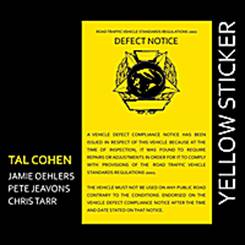 | Tal Cohen Quartet - Yellow Sticker (Independent/www.talcohen.com.au)
|
These musicians are Perth-based, where the jazz scene is thriving as a result of extensive courses in jazz studies. Twenty-six year old pianist Tal Cohen, the leader, is a graduate of Western Australian Academy of Performing Arts (WAAPA) where bassist Pete Jeavons, and drummer Chris Tarr are lecturers. Saxophonist Jamie Oehlers is head of jazz studies at WAAPA, a highly acclaimed global performer who doesn't disappoint here. With talent of this level a debut album is bound to be successful. The CD title refers to a vehicle defect notice which Cohen says is ?for dad,' who rescues him when his car breaks down. That title track opens with some crisp solo piano notes in a jagged time before the ensemble lifts off with tenor sax and piano in unison for a fast post-bop theme, which drops into a slow, languid connecting passage. Oehlers's solo travels in hyper time, interspersed with piano, leading to counterpoint and a crescendo of speeding tenor sax against the repeated stabbing of piano treble chords. Amidst five varying originals, several of Eastern European modality, two standards are included: a luscious interpretation of the ballad Everything Happens To Me and Tadd Dameron's On A Misty Night where Cohen plays a marvellously innovative lengthy solo, of romantic introspection, swinging sequences, and skilful chordal construction. An impressive debut for an outstanding pianist
   
|
by John McBeath
Previously published in The Australian April 2012 |
| Back to Index |
|  | Alfredo Rodriguez - Sounds of Space (Mack Avenue/The Planet Company)
|
Cuban pianist Alfredo Rodriguez 26, has achieved critical acclaim since moving to the US in 2009 making this debut album eagerly awaited. No less a figure than Quincy Jones has co-produced the recording of originals and names Rodriguez ". . . one of the most prolific and gifted jazz pianists of the 21st century." Studying classical music in Havana, Rodriguez knew nothing of improvisation until he heard Keith Jarrett. A Cuban classical influence jumps out from the start of track one, Qbafrica with piano and bass flourishes, moving into an Afro rhythm with drummer Francisco Mela. The classical infusion stays during Rodriguez's solo ending in a Stravinsky-like keyboard dash. A piano trio album with an occasional guest artist ? including the Santa Cecila Quartet in a pictorial narrative, Fog ? most tracks have Michael Olivera on drums and bassist Gaston Joya. Sueno de Paseo is a pretty ballad melody featuring Ernesto Vega on dreamy soprano sax, while Silence, also with soprano, works through varying passages with skilful bass solos and piano/soprano unison sequences before Rodriguez flies off in a swinging, note-packed solo. A tribute to Bud Powell, Cu-Bop is the composer's idea of how bop might have sounded had Powell been born in Cuba, and works that proposition extremely well. A virtuosic display of Afro-Cuban ideas blended with avant-jazz
    
|
by John McBeath
Previously published in The Australian April 2012 |
| Back to Index |
| 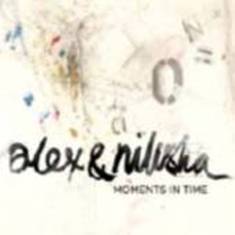 | Alex Pertout and Nilusha Dassenaike - Moments in Time (Whispering Tree Music/The Planet Company)
|
Alex Pertout is a very highly regarded Melbourne multi-instrumental percussionist, musical author, and educator. He's appeared on literally hundreds of recordings, film and TV soundtracks, and in huge numbers of live performances as disparate as the Melbourne Symphony Orchestra and the Kevin Borich Express. Pertout has worked with vocalist/composer Nilusha Dassenaike of Sri Lankan background, for the past ten years, and their album draws on Latin, Asian and African music styles, all infused with jazz influences in originals and traditionals. This is a formidable undertaking, utilising up to nine additional musicians and Pertout's astonishing assemblies of percussion instruments ? ten on some tracks. Free/Male Male, a Sri Lankan folksong has Pertout employing an ibo pot, kanjira (Indian frame drum), bongos, glockenspiel, shekere (an African gourd shaker), castanets, windchimes and other percussive effects behind Dassenaike's enchanting lead and background vocals culminating in her counterpoint voicings. There's a fine piano solo from Joe Chindamo, plus a sarod, piano accordion, bass and drums. Santamaria's Afro Blue, in addition to luxuriant over-dubbed vocals, features both Pertout's driving congas and sympathetic trumpet and flugelhorn solos from Miroslav Bukovsky. Dassenaike's ethereal ballad The Wind, with its dreamy lyrics uses only a piano trio with percussives, while Pertout's Moments In Time with Dassenaike's languid words, swings with a gentle Latin beat
    
|
by John McBeath
Previously published in The Australian April 2012 |
| Back to Index |
|
























































